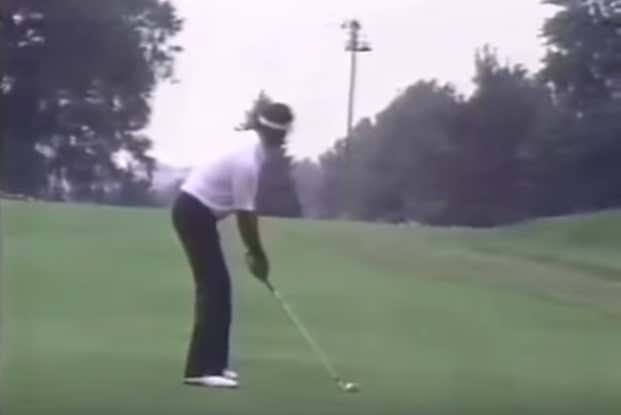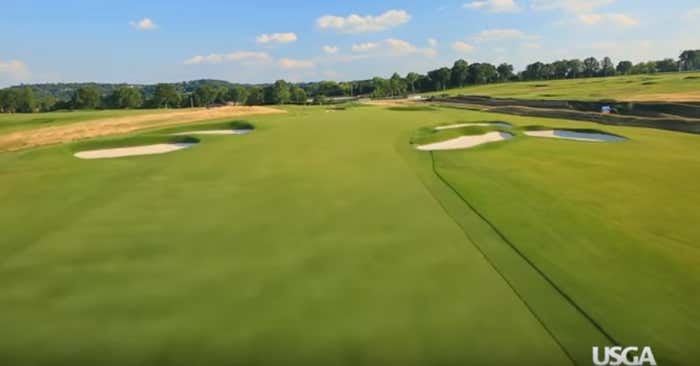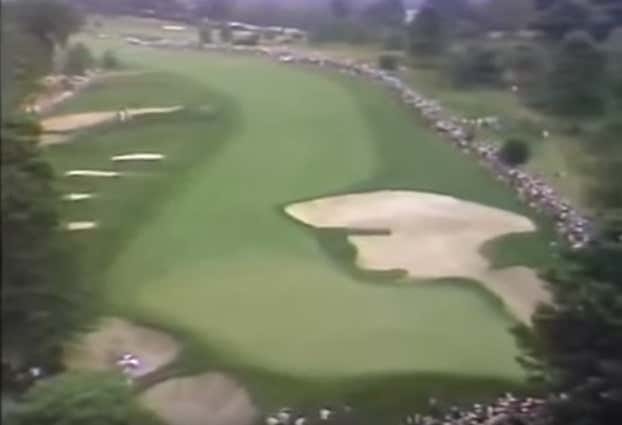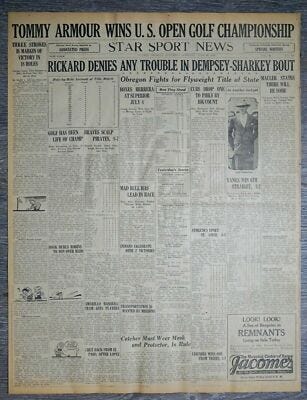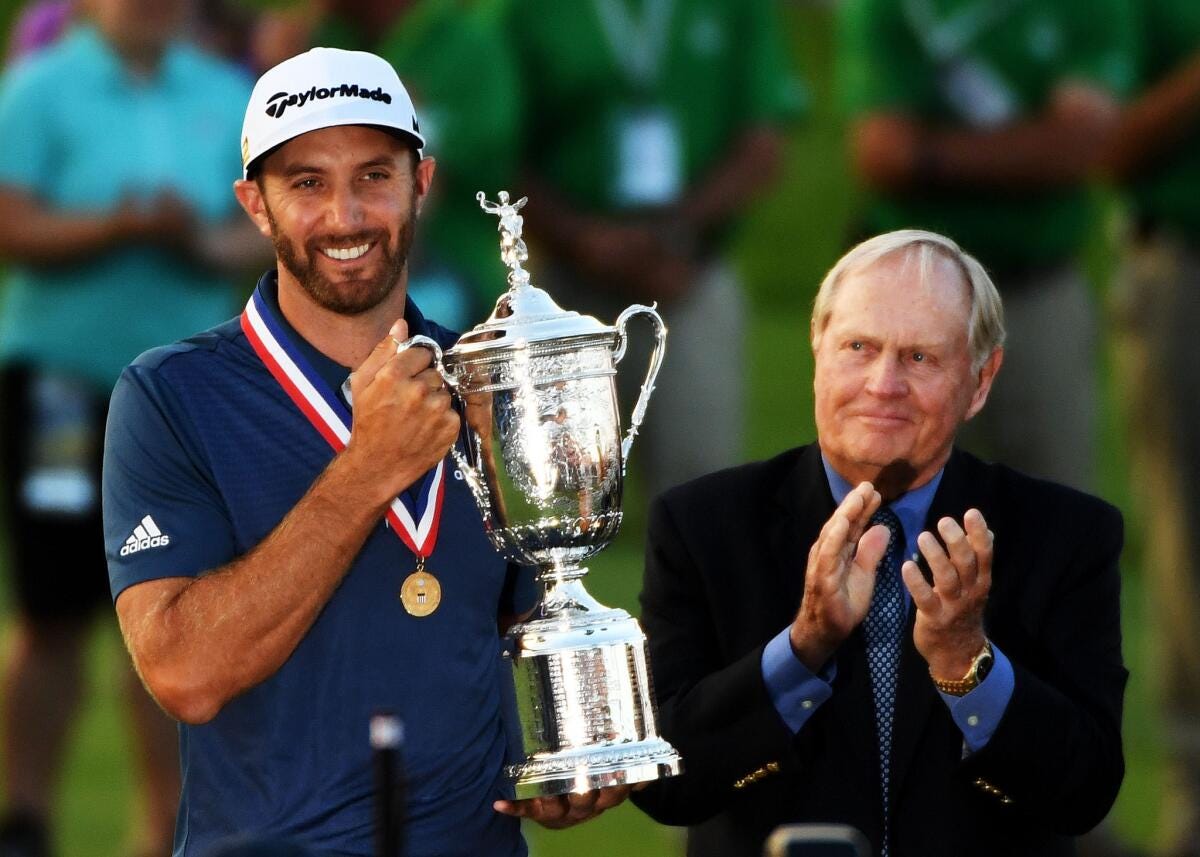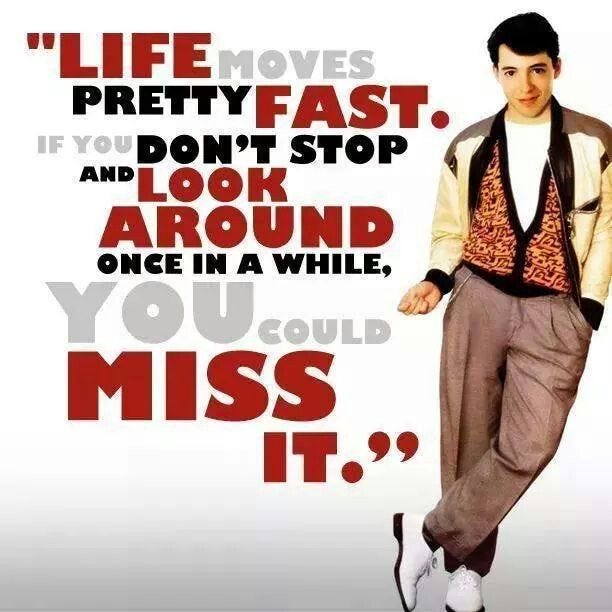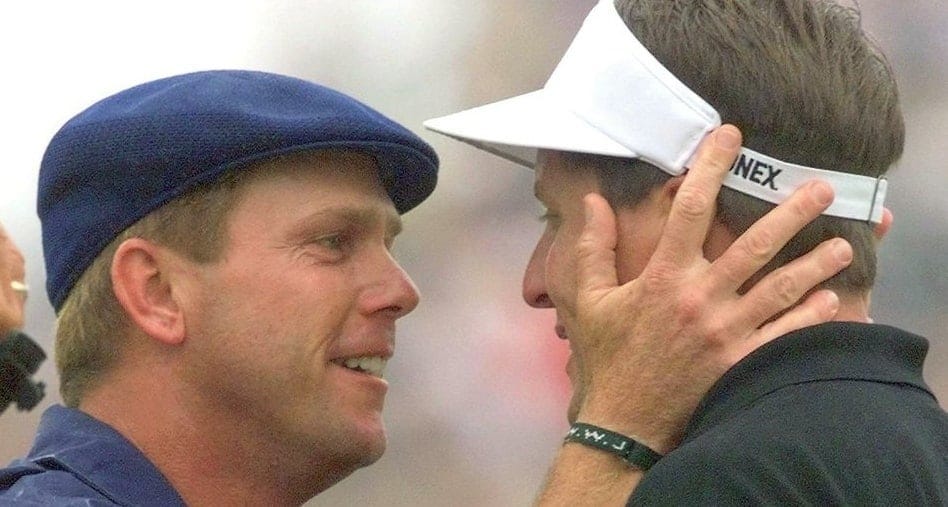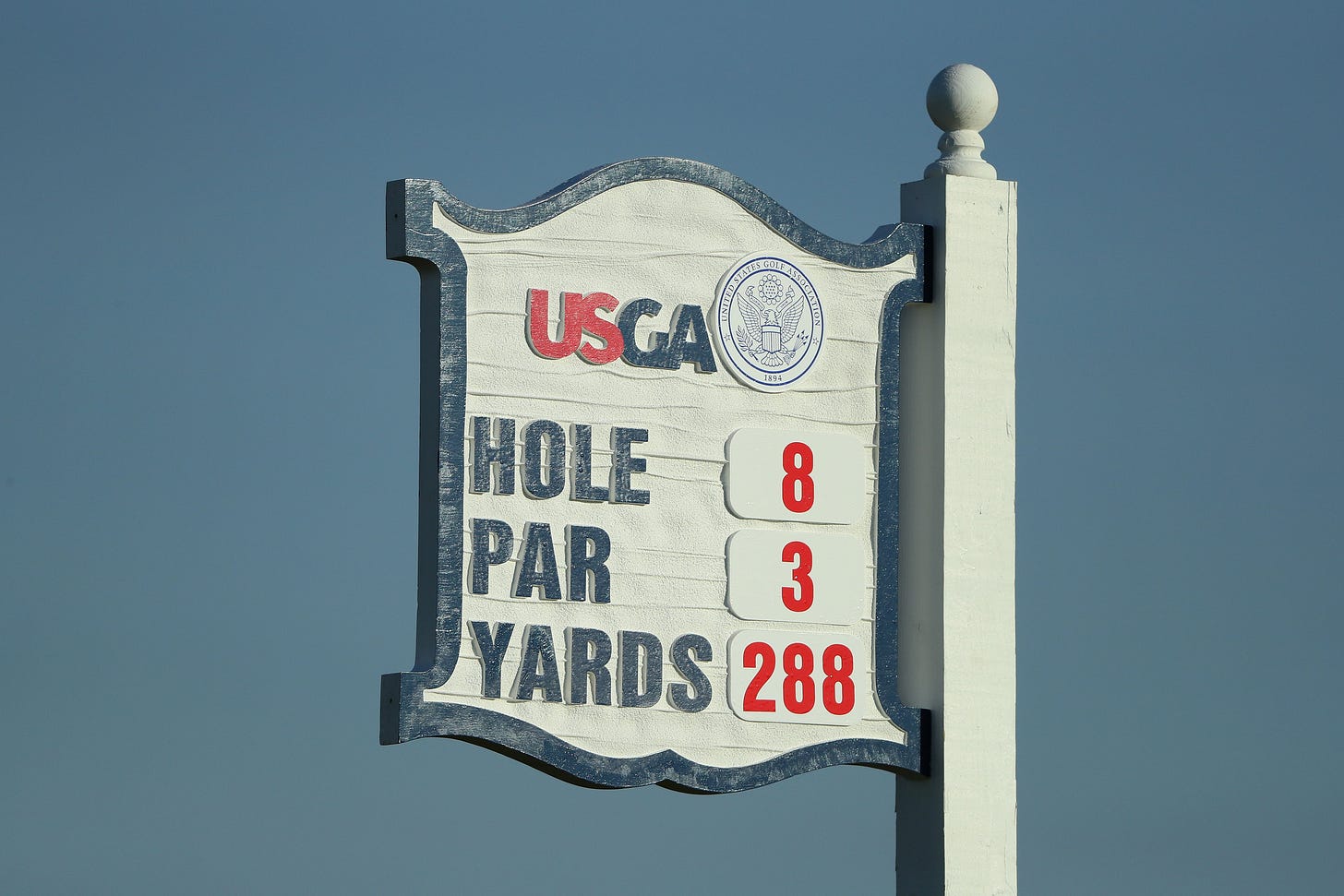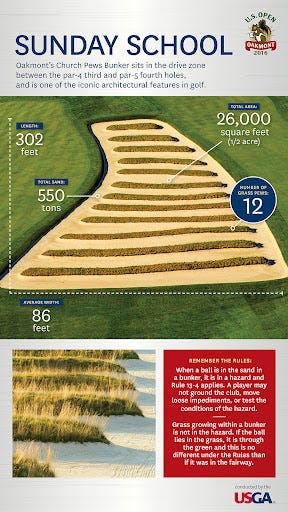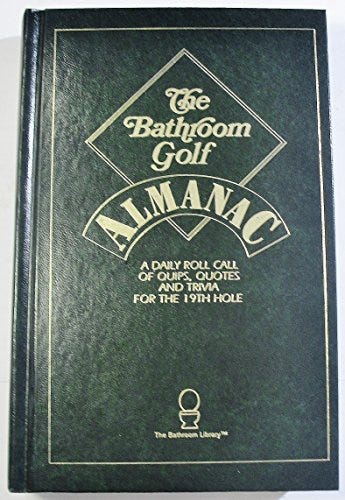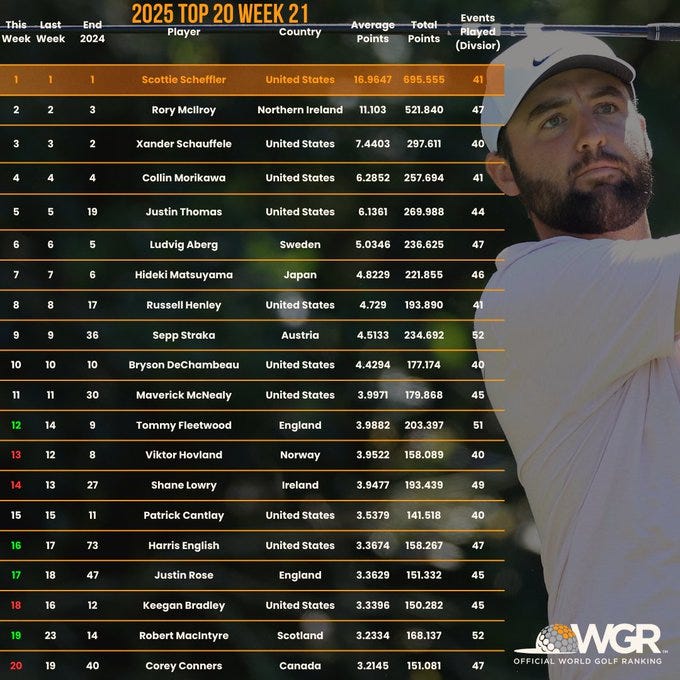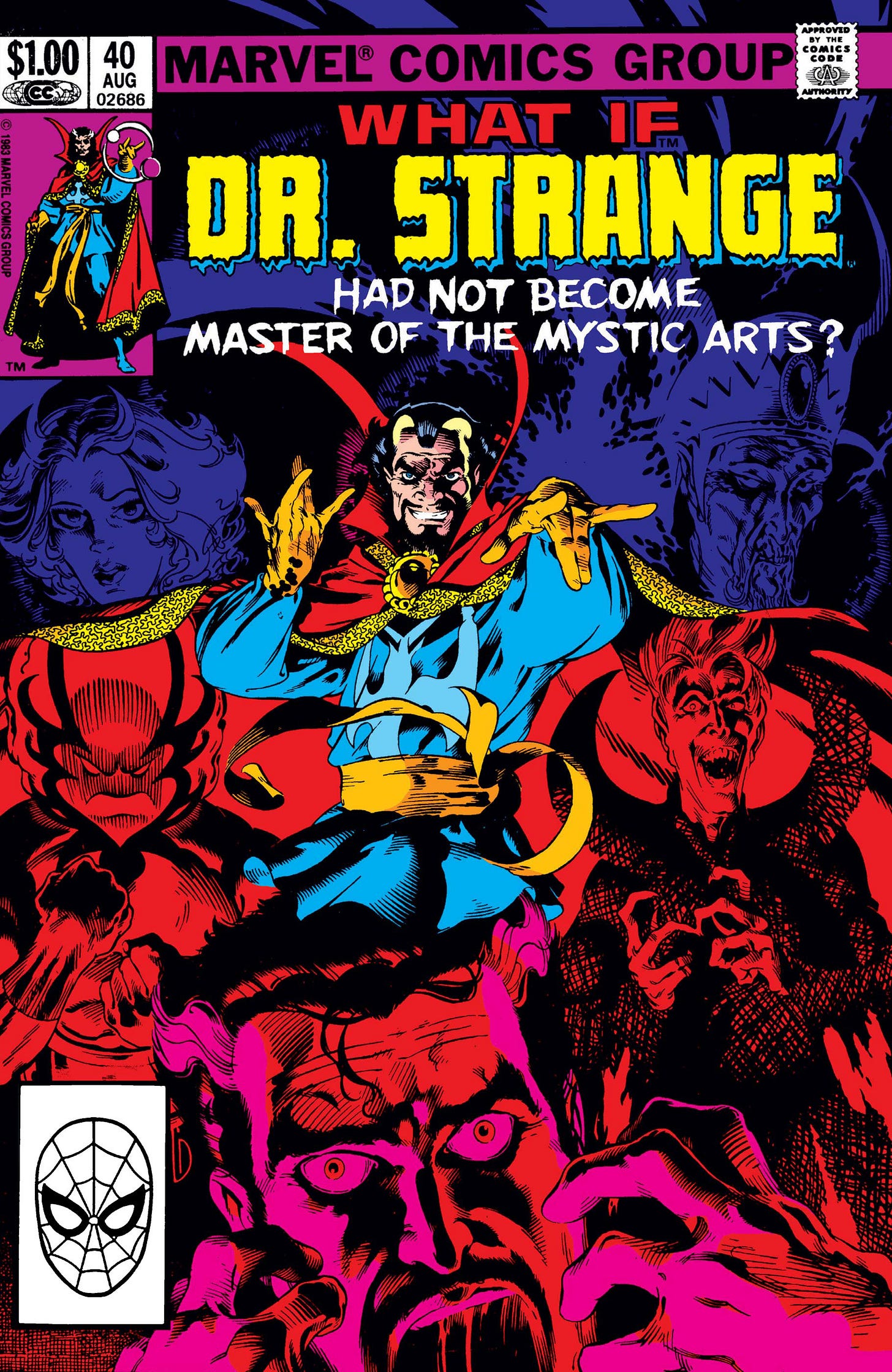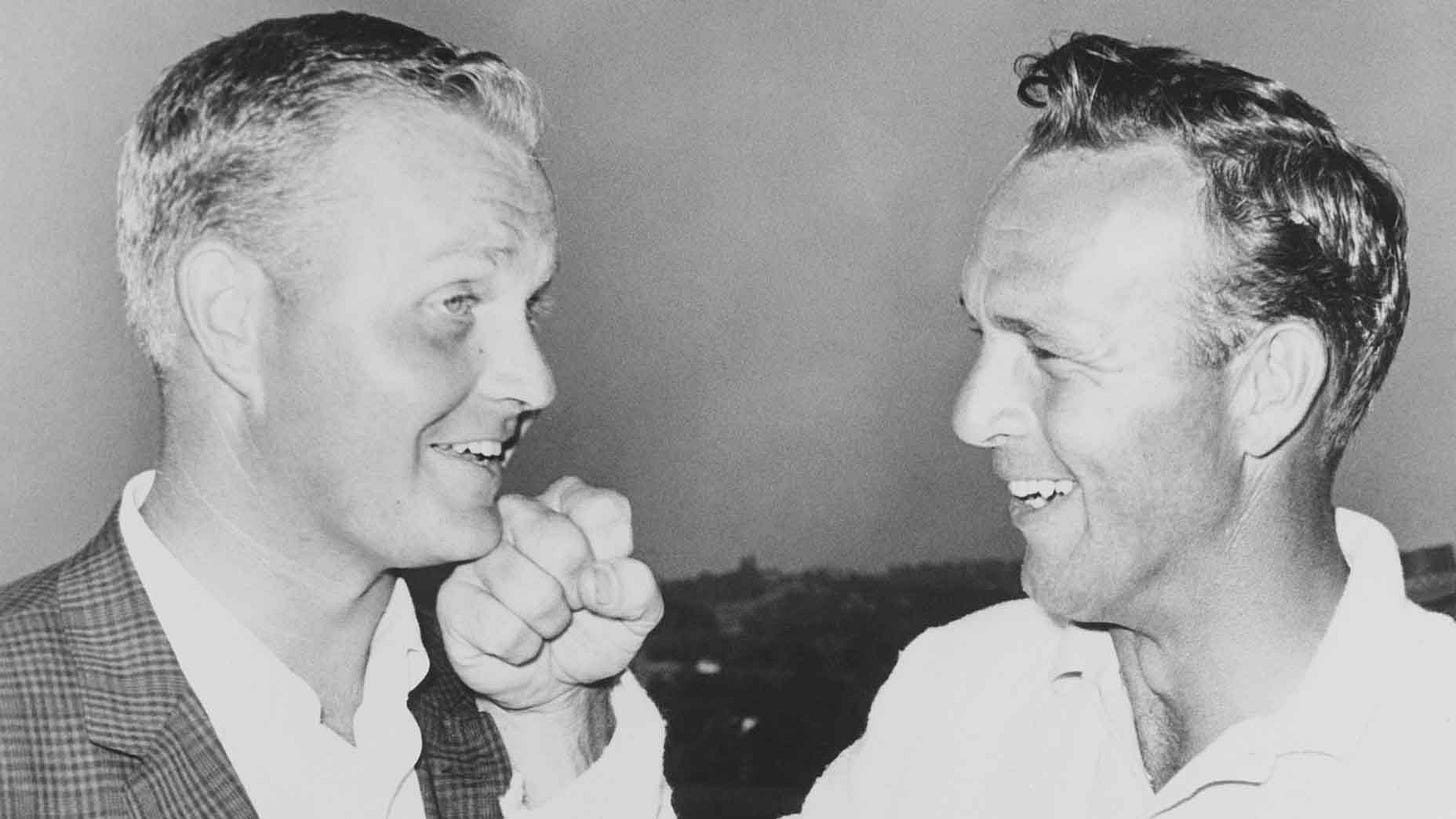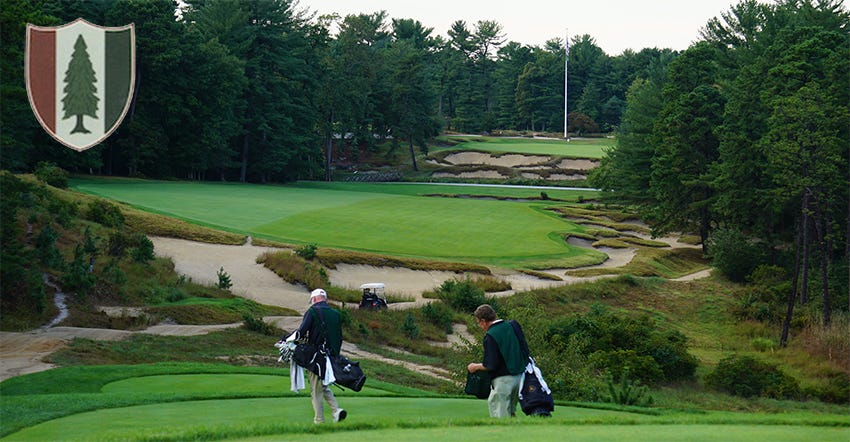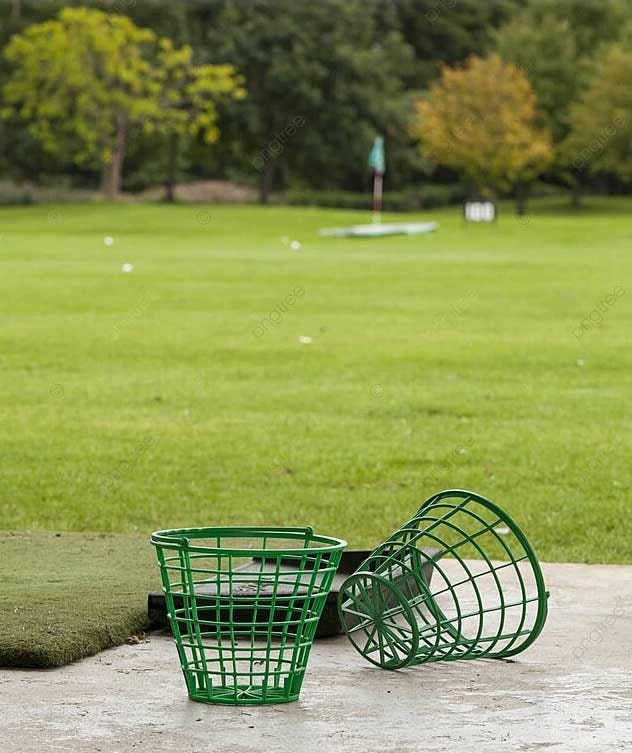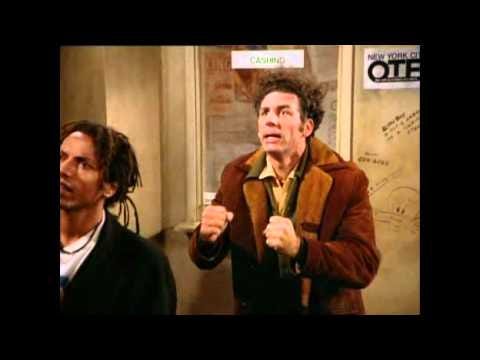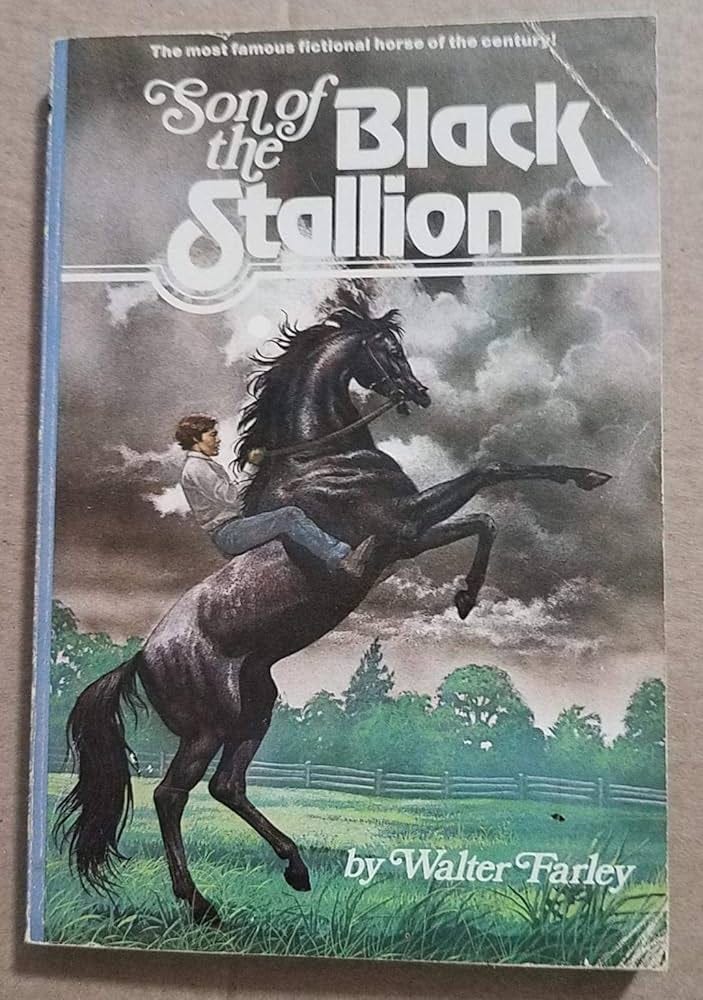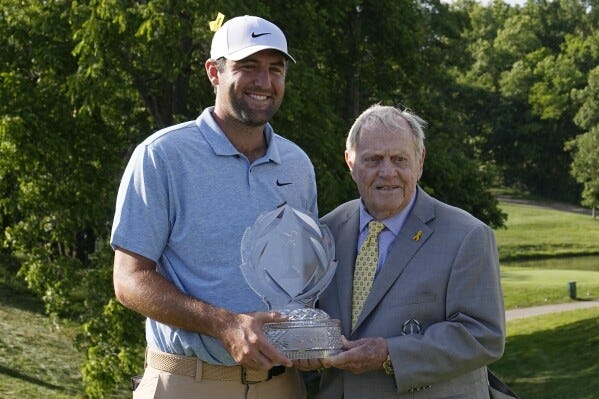THE 2025 U.S. Open Preview
2nd Annual Tradition (Except Last Year I Never Completed It, So I Guess It's the 1st)
Two more Majors to go. These things are getting to be like football seasons—blink and it’s over. We do have a Ryder Cup this year at least. 2025 brings a return to fabled Oakmont after a nine year absence. Contrary to conventional wisdom, this course ain’t all that. At least, not to the measure of reputation in my opinion. A links inspired course in suburban Pittsburgh, 300 miles from the Atlantic? It doesn’t feel right to me. But hard? Oh yeah. You know the drill—18 segments for 18 holes of golf. Let’s get to it.
1. Oakmont Country Club—a Brief History
Oakmont first opened for play on October 1, 1904 and was built on farmland which was ideal for mimicking a tree-less inland links (that will be important later). The original plot of land measured 191 acres and played at 6,406 yards from the tips. As these things seem to go the majority of the club and course acreage (I’m talking 99.5%) actually lies in the adjacent suburb of Plum rather than Oakmont. For my Tennessee readership it would be like if there was a Maryville Country Club but located in Alcoa.1 Or something like that. Anyway the course is 12 miles or so northeast of downtown Pittsburgh.
The Oakmont borough is along the Allegheny River while Plum is within the River Valley. Despite this, no water hazards exist on the property as it sits on elevated, well drained terrain. Notice on the map above what appears to be a road running east to west (bottom to top on the picture) bisecting seven holes from the remainder of the course. That’s because it is a road, the Pennsylvania Turnpike2 in fact. Cart or pedestrian traffic is routed underneath the Turnpike via a tunnel near the main clubhouse.
Oakmont’s Major Championship heritage is unmatched in American golf. This will be its 10th hosted Open (the most, Baltusrol is next with seven) and depending on how you count U.S. Amateurs the 19th men’s Major (six Am’s, three PGA’s). The course was also the site of two Women’s Opens and three NCAA Division I Men’s Championships. We will look at each Open individually with varying degrees of detail on down.
As for actual course features, I mentioned the original yardage maxed out at 6,400 yards. That is significant with this years Championship set to play at 7,372. With not even 1,000 yards added from the first day of play nearly 125 years ago the course architect and founder, H.C. Fownes, can be credited with atypical foresight. Specifically in recognizing how technology would eventually overwhelm at the time contemporary courses.
Drilling down deeper, Fownes laid out a course with the rubber-wound “Haskel” ball in mind, the ProV1 of its day which replaced gutta-percha. I am unaware of any course built around that era which remains closer to its original design. The regular reader knows I am a lover of all things Augusta National. That place might as well have been plowed under and rebuilt from what it is today compared to its opening which was almost thirty years after Oakmont.
As for whether this is the most difficult course in America would be in the eye of the beholder and subject to another post. It’s USGA rating is 78.4 with a slope of 150. For comparison Winged Foot is 76.4/140 and Pine Valley is at 76.6 but with a greater slope of 155.3 That indicates Oakmont presenting slightly more challenge to the scratch player but more difficult for a bogey golfer at Pine Valley. These things are relative to conditions and set up of course so it’s an unanswerable question. What we know is par will be a good score this week.
Where lies the difficulty you may ask. Well, all of it but you expect better answers here than that. Oakmont was a forerunner of the “penal” school of architecture. “A shot misplayed should be a shot irrevocably lost”, has been ascribed to a number of course designers but could just as well be credited to Fownes or his son who took charge in 1911. For starters, the property is peppered with ~170 bunkers, many of which are deep, and is known far and wide for its “Church Pew” bunker seen in the header photo above dividing the 3rd and 4th fairways.
Some greens (1, 3, 10, and 12) pitch to the rear away from the fairway which is somewhat unusual. Every green though is where this place lives up to its intimidating reputation. They are large, wildly undulating, and screaming with speed on perennial Poa annua. The precise strain of Poa is unique from any other course in America. A comparison to Augusta is apt in that regard other than the Poa. The only real difference is no Rae’s Creek or Edenic foliage framing the targets. I would submit if The Masters green speeds were ramped to the level of Oakmont, over par would win many years.
Finally you have the trees or lack thereof. Initially there were basically none but after the 1953 Open famed writer Herbert Warren Wind (who coined the phrase “Amen Corner”) described Oakmont as an “ugly brute of a course”. Members were displeased with this characterization and chose to rectify the insult by planting in the neighborhood of 5,000 trees. Voila! Now they had a parkland course as disparate from original intent as could be. By the 1994 Open the overgrowth made the course unrecognizable and was also contributing to turf deterioration. The wise decision was made to begin removal of the trees shortly thereafter.
Since that time an estimated 15,000 trees have been sacrificed. After the 2007 Open they went Back to the Future so to speak and removed virtually all remaining timber within the interior. Now you may read that there are no trees in play whatsoever. That is essentially true but there are plenty of them still on the perimeter border and some will be seen behind grandstands. To say “none are in play” discounts just how far a player might hit offline. Just saying. I would be remiss without stipulating this deforestation was completed prior to the last Open here in 2016 so this won’t be a new look for the returning players or the viewers from that time and now. I only mention it to flesh out the entire history.
Before moving on here are a few pictures borrowed from Business Insider for perspective. First, here is a grainy photo from 1983 of the 7th fairway.
Same fairway in 2016. Might as well be a different planet.
One more to bring it home—the 4th hole looking back from the green in 1983. Top left you can vaguely see almost an apparition of the Church Pew bunker.
That hole in 2016:
So they didn’t outright clear cut the thing but you can see what remains on the periphery.
2) What to Expect from Oakmont Vis-à-Vis the USGA
The history of the USGA and its unspoken desire to protect par is well known if not infamous. Most hard core fans can recall a number of occasions when setup didn’t toe the line but high-fived it while skydiving past. Specifically, greens have too often been pushed to the brink of death. Then that malfeasance was compounded by pin positions which invited wiseass comparisons to your average Goofy Golf on the Myrtle Beach Grand Strand.
It has been awhile since players have uniformly hammered the USGA for what they and others considered preposterous conditions. The last time would have been in 2018 at Shinnecock Hills when they completely lost the greens.4 Not coincidentally, winning scores just keep going lower and lower in relation to historical norms. In the six years since, the lowest winning total has been 6 under four different times. Then you had Gary Woodland’s -13 at Pebble plus Wyndham Clark’s -10 at LACC. For context it was only about 30 years ago that Dr. Gil Morgan reached double digits under par early in Round 3—the first time in Open history that had been seen. The players of today (and their tools) play a very different Open than I grew up watching.
The USGA will be seeking vengeance on a piece of land that allows for such. Early reports are rough is to be topped off at five inches. Further, the recent USGA practice of graduated rough—a lower cut nearer the fairway—ostensibly to lessen the penalty for a not particularly wayward shot will be abandoned. The real question will be its thickness. Allegheny County had well below average rainfall from January through May (-4.7 inches). However the last few weeks rain has been round-the-clock, at times heavily and Sunday the area was under a flood watch.
Then you have the ubiquitous but less celebrated (or cursed) drainage ditches, over 20 of which are scattered around the course with as many as ten affecting play. A network of mostly grass-lined trenches—deceptively simple, brutally penal, and waist high in places—these are Oakmont’s unseen teeth. Some are playable, others are not and function like hazards. Dry water hazards you could say. With Oakmont built on a ridge, these were originally designed for functional drainage to channel water off the sloped fairways. Often cut across those fairways, if your ball finds one you aren’t in water but dealing with a steep slope and an awkward stance.
Back on the first week of May, USGA chief championships officer John Bodenhamer stressed that while they had manicured these ditches in 2016 so players could get in there and play, that’s not happening this year.
“You hit in those ditches, good luck. There might be some that will play out of them but it will be 12 to 18 inches of nasty.”
The problem is the plan was for firm and fast with Stimpmeter readings of ~15 which is a lofty target given the recent drenching. I presumed scores closer to when Angel Cabrera was the Champion here at 5 over in 2007 than Dustin Johnson’s -4* in 2016. If the course is as soft as is being rumored it’s hard telling how low some of these guys might go.
3. The U.S. Open at Oakmont Through the Years
As stated this will be Open number ten for Oakmont. The history of golf is its primary appeal to me thus having so many is catnip. With that number I have to be careful with bloat so let’s see how well I can Cliff Note each year. I’ll do 1-8 and save 2016 for a separate section.
1927
Winner: Tommy Armour in an 18 hole playoff over Harry Cooper
Yardage: 6,965 yards with par of 72
Winning Score: 301 (+13)
Cut: +19
Purse: $2,000 (winner $500)
Round Leaders: 1st—Harry Hampton/Jimmy Johnston (a) +1, 2nd—Johnston +3, 3rd—Cooper +8 (Armour was 1 stroke back)
The Skinny: Armour’s mark of 301 remains the highest winning score in any Major since 1919 and the last to exceed 300 strokes. Only one round was turned in under 70 the entire week, Al Espinosa’s final round 69. The win would also be the second (Bob Jones won at Scioto the prior year) of a 39 year American win streak in the Open (including the unplayed years of 1942-1945 for WWII) finally broken by Gary Player at Bellerive in 1965. This was the last Open to begin on Tuesday.
1935
Winner: Sam Parks Jr.
Yardage: 6,981 with par of 72
Winning Score: 299 (+11)
Cut: +17
Purse: $5000 (winner $1000)
Round Leaders: 1st—Butch Krueger -1, 2nd—Jimmy Thomson +2, 3rd—Parks/Thomson +7
The Skinny: Scores were again inflated but could be attributed to severe weather as much as Oakmont’s difficulty. Parks was a mere club pro at South Hills Country Club located in Pittsburgh. He benefited immensely as a local supposedly playing Oakmont daily in the month lead up to the Open. The Stimpmeter was invented after this Open by Edward Stimpson of Massachusetts in response to the lightning Oakmont greens.
1953
Winner: Ben Hogan
Yardage: 6,916 with par of 72
Winning Score: 283 (-5)
Cut: +9
Purse: $20,400 (winner $5,000)
Round Leaders: 1st—Hogan -5, 2nd—Hogan -5, 3rd—Hogan -4
The Skinny: In his Triple Crown season Hogan won wire to wire by 6 over Sam Snead. Snead trailed by only 1 entering the final round and maintained that margin into the back nine. Hogan made three birdies on that side while Snead crumbled. That year the PGA and British were played in consecutive weeks. However the British had a required 36 hole qualifier concurrent with the PGA finish. Hogan could not have played both events even if physically capable which he almost certainly was not. 23 year old amateur Arnold Palmer from neighboring Latrobe, PA made his first U.S Open start this week missing the cut by nine.
1962
Winner: Jack Nicklaus in an 18 hole playoff over Arnold Palmer
Yardage: 6,894 with par of 71
Winning Score: 283 (-1)
Cut: +8
Purse: $73,800 (winner $17,500)
Round Leaders: 1st—Gene Littler -2, 2nd—Arnold Palmer/Bob Rosberg -3, 3rd—Palmer/Bobby Nichols -1 (Nicklaus was +1, T5 with Gary Player)
The Skinny: If this is not the most famous Oakmont Open it’s the most consequential. Arnold Palmer at the height of his powers, playing in his backyard enabling a full enlistment of Arnie’s Army in the gallery. In the other corner, the interloper from Ohio and precursor to Tiger Woods was 22 year old Jack Nicklaus. Palmer likely felt like he was trying to hold off the inevitable with Nicklaus having been stalking him since Cherry Hills in 1960, the only Open Palmer won. His gallery probably felt the same and legend has it that catcalls toward Nicklaus, mostly about his weight, were relentless on playoff Sunday. Nicklaus surely feeling like a Christian being fed to lions in Rome never blinked and went up four strokes after just six holes. Palmer gamely battled back to within one but a bogey on 13 essentially ended it. Putting was the difference. Jack had one 3-putt all week to Arnie’s 10. For Nicklaus it was his first victory as a professional. Many would follow.
1973
Winner: Johnny Miller
Yardage: 6,921 with par of 71
Winning Score: 279 (-5)
Cut: +8
Purse: $219,400 (winner $35,000)
Round Leaders: 1st—Gary Player -4, 2nd—Player -5, 3rd—Jerry Heard/John Schlee/ Arnold Palmer/Julius Boros -3 (Miller was +3 and T13th)
The Skinny: Now we have the most famous round in all of U.S. Open if not Major Championship history. Johnny Miller’s final round 63 on menacing Oakmont. He birdied 1 through 4 but gave one back on 8. Birdies on four of the next five holes drew him even with Palmer, Boros, and Tom Weiskopf. Another birdie on 15 gave him the lead and after lipping out a 20 footer on 18 for a 62 his masterpiece was stamped. Finishing an hour ahead of the leaders only lightly regarded John Schlee made a run and he finished 1 back.
In the aftermath many Oakmont apologists sought to minimize Miller’s achievement. The greens were wet, he had no pressure, the greens were slow, the greens this, the greens that. Don’t you believe it. Miller hit every single green in regulation leaving ten birdie putts within 15 feet and five of those within 6 feet. Only 3 other players broke 70 on that day. This was a prodigy who had it all come together one afternoon.
1983
Winner: Larry Nelson
Yardage: 6,972 with par of 71
Winning Score: 280 (-4)
Cut: +9
Purse: $500,000 (winner $72,000)
Round Leaders: 1st—Seve Ballesteros/John Mahaffey/Bob Murphy -2, 2nd—Mahaffey/Joey Rassett -1, 3rd—Ballesteros/Tom Watson -1 (Nelson was Even and T3 with Calvin Peete)
The Skinny: Nelson was 7 over after 40 holes but played 5 through 18 in 7 under returning to Even and into contention. The Saturday heater from Nelson led to a total of 132 over the final 36 holes. That broke a 51 year old record set by Gene Sarazen. This was the last Open cut made by Arnold Palmer and the last he played at all except for his ceremonial farewell the next time the USGA returned to Oakmont. Which happens to be next.
1994
Winner: Ernie Els over Loren Roberts on the second sudden death playoff hole. Colin Montgomerie had been eliminated after 18.
Yardage: 6,946 with par of 71
Winning Score: 279 (-5)
Cut: +5
Purse: $1.7 million (winner $320,000)
Round Leaders: 1st—Tom Watson -3, 2nd—Montgomerie -6, 3rd—Els -7
The Skinny: This was the first Oakmont U.S. Open that I remember and the experience soured me on the place which lingers to this day. The Open too frankly. Here is what happened: 24 year old leader Ernie Els yanked his opening drive into very deep rough. Again—1st hole, first time leading a Major on Sunday, at age 24. Els got to his ball and requested relief as his line of sight was impeded by a television crane. The walking official was Dr. Trey Holland who deemed the crane an immovable obstruction and allowed Els a free drop onto a much more commodious lie. Whether the crane was positioned in Els’ line was not in question. Whether it was immovable was. And that question was answered 15 minutes later when the truck housing the crane drove to another location.
Adding to my rage as this played out was the ABC crew pouring it on the USGA. Not many reading this will remember that ABC had Open rights for 29 consecutive years. That would end at conclusion of this tournament when they were outbid by NBC. ABC folks were salty at this lack of loyalty and this incomprehensible error by Holland (a future USGA President) was seized on. Particularly by Bob Rosburg who was incensed at the whole deal and kept saying, “Jim (McKay) this is just not right…”
Hell no it wasn’t and to the people back then (and still) who say Els made bogey anyway so it didn’t matter you are wrong. He coulda made double or even triple from the spot he was in. Who knows at that age where his head goes after with a huge number to start. Forever tainted.
2007
Winner: Angel Cabrera
Yardage: 7,230 with par of 70
Winning Score: 285 (+5)
Cut: +10
Purse: $7,000,000 (winner $1,260,000)
Round Leaders: 1st—Nick Dougherty -2, 2nd—Cabrera Even, 3rd—Aaron Baddeley +2 (Cabrera was +6, T7. Tiger Woods sat solo second at +4)
The Skinny: This one is unmemorable. The only thing really notable was Woods being in the last group and not able to reel it in. Although to that point he had not won a Major from off the 3rd round lead and that would continue. Cabrera wobbled coming in with bogies on 16 and 17 cutting a 3 stroke lead to 1. Neither Woods nor Jim Furyk could birdie 18 to force a playoff. Baddeley opened with a triple bogey en route to an 80 and was never heard from again.
So there you go. Two things stick out:
Of the nine previous winners only Sam Parks failed to win at least one other Major. However seven of the nine claimed their first Major championship here (Hogan and Nelson had won Majors previously) meaning this weeks champion may be a surprise but they are unlikely to be a fluke.
The other thing is the prize money leaps starting in 1994. Golf became big business in the 90’s.
4. When We Last Met
The picture above is nine years ago when Dustin Johnson finally bucked King Kong in a Major three days before turning age 32 here at Oakmont. The cut was +6 and DJ’s share of a $10 million purse was $1.8 million after finishing 5 under. Well, technically it was 276, -4. You all surely remember that fiasco. Sunday on the 5th green Johnson’s ball oscillated as he moved into address position. He pulled back and consulted the walking official claiming he had not influenced his ball, which he didn’t IMO. He was instructed to continue and the putt was holed. SEVEN holes later, which you figure approached two hours in time, he was informed he MIGHT be penalized but the decision would be made at the rounds conclusion.
Now it is here where you can evaluate many things no matter how this turned out. It is the kind of deal where golf brings heaps of scorn on itself, the very epitome of kicking oneself in the ass. The Rules of Golf far too often are separated from common sense. If a player’s ball moves after being at rest on the green without them touching it to do so, even if address position has been taken, how is it their problem? A stationary ball cannot move if not touched aside for two realistic ways—1) Wind. Out of the players control. 2) The Committee setting up the course has the green so devoid of grass a ball can’t hold position on certain sections. Again, out of a competitors control.
With a wild imagination you could concoct other scenarios but that only makes it worse. Suppose an ostrich ambled by and gobbled up your ball. Or, took a bite to taste but thought better of it and dropped it up 2 feet from the cup. The player obviously would not be penalized for either. You simply replace the ball best you can and move on. Now, I’m screaming about a ghost here as this rule changed in 2019 and I’d like to think this incident had a lot to do with it. Any movement of the ball on the green even if caused by the player is now replaced with no penalty if the movement is accidental.
With that out of the way it doesn’t let the USGA off the hook even with the Rules at the time. You cannot, under any circumstances, approach a player mid round and say,
“Hey, we might penalize you but we dunno yet so enjoy the rest of your round trying to win a National Championship.”
Penalize the guy or not. Waiting until after the round to assess a penalty stroke, which of course is exactly what they did, only invites charges of manipulation. It’s hard to believe this would ever happen in todays wide open world of gambling but don’t give the USGA an opening to say hold my beer. And if Johnson hadn’t won going away by 4 does anyone really think they would have stroked him if it changed the results? No way they would have. This was self-appointed blue bloods thinking they were giving the appearance of protecting the game but instead made a farce of it.
There is really not much else to talk about from this Oakmont Open. Was a mundane, run of the mill Major otherwise. I want to say that in general I am a supporter of the USGA and its mission despite the fact someone like me wouldn’t be welcome in any capacity of serving there. I’ve even paid the silly membership fee many years when my Son was a junior player just to get the tag for his bag! You did get the official Open hat each year too which we loved. The point is I wanted to make clear we endorsed the USGA as an entity and governing body. No different than a yard sign for an election. But if they do dumb things you have to call a spade a spade.
5. Our Traditional Ferris Bueller Memorial Entry
When a Major returns to a prior site we always look back at the names now largely forgotten and those still kicking, even if futilely. From 2016 significant to me:
Andrew Landry was the 1st round leader. Who? Hey don’t ask me I’m just the reporter. To be fair, Landry won twice on Tour in later years. He also didn’t go away that week, T2 after 3 rounds and in the final group with Shane Lowry but folded with a 78. His last Major was the 2019 Masters.
Other notable finishes: Jim Furyk tied Lowry and Scott Piercy for runner up. Sergio Garcia was T5, his last Major Top 10 not including his Masters win the following year. Jason Dufner and Zach Johnson were T8. Brooks Koepka was T13 and would win it the next year starting his 3 year heater. 22 year old Bryson DeChambeau was T15 in his first Major as a pro. Defending champion Jordan Spieth was +9 and T37. Low amateur was 21 year old Jon Rahm at +7 and T23.
Missing the cut and their age at the time: Retief Goosen 47, Ernie Els 46, Phil Mickelson, who turned 46 the day the Tournament started, Justin Rose 35, Rickie Fowler 27, Rory McIlroy 27, Tony Finau 26, Patrick Reed 26, Hideki Matsuyama 24, and amateur Scottie Scheffler who would turn 20 two days after the Tournament ended.
Players who competed in 2016 and have qualified this year in order of current age plus result: Phil Mickelson (54—MC)), Lucas Glover (45—MC), Adam Scott (44—T18), Justin Rose (44—MC), James Hahn (43—T49), Dustin Johnson (40—Won), Chris Kirk (40—MC), Keegan Bradley (39—MC), Shane Lowry (38—T2), Jason Day (37—T8), Rory McIlroy (36—MC), Tom Hoge (36—MC), Brooks Koepka (35—T13), Harris English (35—T37), Tony Finau (35—MC), Patrick Reed (34—MC), Carlos Ortiz (34—MC), Byeong-Hun An (33—T23), Hideki Matsuyama (33—MC), Justin Thomas (32—T32), Daniel Berger (32—T37), Bryson DeChambeau (31—T15), Jordan Spieth (31—T37), Cameron Smith (31—T59), Matt Fitzpatrick (30—T54), Jon Rahm (30—T23), Scottie Scheffler (28—MC)
6. How Does One Qualify for the U.S. Open Anyway?
*For a complete outline of all USGA regulations in regard to the U.S. Open, click HERE as this is a loonnnggg section.
This is a more complex question than most would think. The British Open is similar in most regards and the shared reason is the two have the all important “Open” in their very name. Theoretically anyone can apply to compete in either Championship. This is not true of the PGA and certainly not The Masters. Augusta for example is strictly invitational and currently has 20 different categories in which a player can earn entry.5 While 20 sounds like a lot, in practice it is a pretty tight band with the field seldom exceeding 100 and often not even 90. There are no alternates or stand alone qualifying tournaments.
With the U.S. Open we alluded to the fact anyone can enter. Here is the exact verbiage which addresses this from the USGA application:
“Entries are open to professional golfers and amateur golfers with an up to date men’s 6 Handicap Index not exceeding 1.4 under the USGA Handicap System.”
Players obtain a place in the field by being fully exempt or by successfully competing in qualifying. The number of players is 156.
Now before we go deeper notice in the quote above I have “professional golfers” bolded. The reason for this is it creates a loophole you could fly a plane through. A few years back a guy by the name of John Eckert finished last in his Fantasy Football league and his “punishment” was to enter U.S. Open local qualifying. He bypassed the handicap requirement (if he even had one) by declaring himself a professional. The USGA checks amateur handicaps to ensure they are at the 1.4 threshold but not pros. After grinding his way to a smooth 112 the story went viral.
Golf Digest dug into the numbers and found in that year of 2022, 13 golfers out of nearly 9,000 entries shot 100 or worse. A statistical improbability if not impossibility for a golfer playing off a legit 1.4. The USGA follows up on all scores that are 8 shots worse than the course rating. The offending player(s) are required to prove their mettle and if unable or unwilling to do so would be suspended from future qualifiers. However, they have not as of yet shut the door on this end around.
Alright so with that out of the way how do we arrive at 156 players? Here is the breakdown:
* Denotes players from LIV
Fully Exempt from local and final qualifying
Winners of the last 10 U.S. Opens (DeChambeau*, Clark, Fitzpatrick, Rahm*, Woodland, Koepka*, Dustin Johnson*, Spieth) totaling 8.
Top Ten and ties from 2024 U.S. Open (McIlroy, Cantlay, Finau, Pavon, Matsuyama, Henley, Schauffele, Burns, Conners, Thompson) totaling 10.
Winner of 2024 U.S. Senior Open (Richard Bland*) totaling 1.
Winners of 2024 U.S. Amateur and runner up, U.S. Junior Amateur, and U.S. Mid-Amateur (Jose Luis Ballester, Noah Kent, Trevor Gutschewski, Evan Beck) totaling 4.
Winners of the last SIX Masters (Scheffler) totaling 1.
Winners of the last five PGA’s (Thomas, Mickelson*) totaling 2.
Winners of the last five British Open’s (Harman, Cameron Smith*, Morikawa) totaling 3.
Winners of the last three Players Championships (All already exempt) totaling 0.
Winner of 2024 DP BMW Championship (Horschel—injured) totaling 0.
Players who qualified for 2024 Tour Championship (Scott, Im, Lowry, Hovland, Pendrith, Aberg, MacIntyre, Fleetwood, Bradley, An, Rai, Bhatia, Kirk, Straka, Bezuidenhout, Hoge) totaling 16
Multi-time PGA Tour winners since the prior year’s U.S. Open (All already exempt) totaling 0.
Top 5 in FedEx Cup Standings as of May 19th of those not already exempt (Bridgeman, Gerard, Stevens, Campbell, Cam Davis) totaling 5.
Korn Ferry points leader from 2024 (McCarty) totaling 1.
Top two players from 2024 Race to Dubai? (Rasmus Hojgaard, Lawrence) totaling 2.
Top player in 2025 Race to Dubai not otherwise exempt as of May 19 (Canter) totaling 0.
Winner of 2024 British Amateur (turned pro) totaling 0.
Winner of 2024 Mark H McCormack Medal (turned pro) totaling 0.
2025 NCAA Division I Men’s Champion (La Sasso) totaling 1
2025 Latin American Amateur Champion (Hastings) totaling 1.
Top 60 in the OWGR as of May 19, 2025 (McNealy, English, Rose, Hatton*, Berger, Spaun, Lee, Detry, Day, Poston, Novak, Glover, Denny McCarthy, Taylor, Jaeger, Tom Kim, Greyserman, Hughes, Vegas, Echavarria, Griffin, Riley, Michael Kim, Reed*, Dunlap, Matt McCarty, Si Woo Kim, Highsmith) totaling 28.
Top 60 in the OWGR as of June 9, 2025 (Young, Cauley, Fox) totaling 3
Last Olympic gold medal winner (Already exempt) totaling 0.
Top player in the LIV standings not otherwise exempt (Niemann*) totaling 1.
So that gives us 87 players, roughly half of the Field. All other players must qualify which has two arms—Local and Final Qualifying. We’ll work somewhat backwards here:
Exempt from Local Qualifying - this is quite a bit longer, 31 categories vs 23 but we’ll do some condensing.
All former U.S. Open Champions (Living Champions and age who are not fully exempt are: Jack Nicklaus (85), Gary Player (89), Lee Trevino (85), Tony Jacklin (80), Johnny Miller (78), Hale Irwin (79), Lou Graham (87), Jerry Pate (71), Andy North (75), David Graham (79), Tom Watson (75), Larry Nelson (77), Fuzzy Zoeller (73), Raymond Floyd (82), Scott Simpson (69), Curtis Strange (70), Tom Kite (75), Lee Janzen (60), Ernie Els (55), Corey Pavin (65), Steve Jones (66), Tiger Woods (49), Retief Goosen (56), Jim Furyk (55), Michael Campbell (56), Geoff Ogilvy (47), Angel Cabrera (55), Graeme McDowell (45), Webb Simpson (39), Martin Kaymer (40)
All players who made the cut in the 2024 U.S. Open https://www.usopen.com/2024/scoring.html
U.S. Senior Open winners from 2019-2023
Fifteen different categories for various amateur achievements plus the top 20 professionals who advance to the PGA Championship
All former winners of The Masters, PGA Championship, and British Open (Those living who are not part of the U.S. Open group above and still active, we’ll say age 50 and under are: Zach Johnson (49), Jason Dufner (48), Jimmy Walker (46), Bubba Watson (46), Sergio Garcia (45), Louis Oosthuizen (42), Francesco Molinari (42), Charl Schwartzel (40), and Danny Willett (37)
Low 30 and ties from the 2024 British Open and 2025 Masters/PGA Championship (Not listed above are: Canter, Dean, Fox, Ferguson, Hillier, Sharma, Burmester, Catlin, Hughes, Noren, Brown, Jordan, Homa, Smalley, Penge, Hall, Taylor Moore, Hossler, Wallace)
Members of the last FIVE Ryder Cup and Presidents Cup teams for USA, Europe, and the World teams (Not listed above are: Stenson, Donaldson, Bjorn, Gallacher, Poulter, Westwood, Fowler, Kuchar, Snedeker, Holmes, Ryan Moore, Wood, Cabrera-Bello, Sullivan, Pieters, Olesen, Casey, Wiesberger, Nicolai Hojgaard, Grace, Leishman, Lahiri, Jaidee, Lee, Bowditch, Bae, Kirk, Haas, Kisner, Chappell, Hoffman, Hadwin, Grillo, Ancer, Haotong, Pan, Young, Pereira, Munoz)
Top 50 career money list on the PGA Tour (Not listed above are: Sabatini, Ryan Palmer)
Top 10 money winners on the PGA Champions Tour and top 5 on European Legends Tour for 2024
This is hilarious—any player who had multiple finishes inside the OWGR top 400 in the last six calendar year ends. (yeah, I’m not looking that up)
Any player in the top 500 on the OWGR as of Feb 19 or Mar 31 of 2025
The top 10 players on the LIV individual standings as of April 7th, 2025 (Not listed above are: Herbert, Munoz, Puig, Burmester, Meronk)
Those who advanced into the full field from Final Qualifying from 13 different sites can be found at the following links:
1. Dallas (7)
2. Japan (3)
3. Walton Heath (England) (8)
4. Summit, NJ (4)
5. Durham, NC (7)
6. West Palm Beach, FL (4)
7. Columbus, OH (6)
8. Canada (7)
9. Atlanta (5)
10. Springfield, OH (4)
11. Valencia, CA (4)
12. Walla Walla, Washington (2)
13. Rockville, MD (4)
The last champion to emerge from final qualifying was Lucas Glover at Bethpage in 2009.
Notables who got in:
James Hahn, Adam Schenk and Carlos Ortiz* from Dallas. Edoardo Molinari from Walton Heath. Jinichiro Kozuma* from Japan, Niklas Norgaard, Matt Wallace, and Thorbjorn Olesen from Canada. Mark Leishman* from Rockville. Preston Summerhays from Valencia.
Notables who did not:
Sergio Garcia*, Abraham Ancer*, Cameron Tringale*, Charley Hoffman, Joel Dahmen, and Aaron Baddeley from Dallas. Francesco Molinari and Adrian Meronk* from Walton Heath. K.J Choi, Jason Dufner, Zach Johnson, Vaughn Taylor, and J.B. Holmes from Atlanta. Luke Clanton, Harry Hall, Luke List, Rico Hoey, Seamus Power, Camilo Villegas, and Gordon Sargent from Canada. Webb Simpson, Doc Redman, Bill Haas, Nick Watney, Tom McKibbin*, and Harold Varner* from Durham. Max Homa, Rickie Fowler, Padraig Harrington, Alex Noren, Jake Knapp, Adam Hadwin, James Piot and Matt Kuchar from Columbus. Stewart Cink, Sebastian Munoz, Jason Kokrak*, Peter Uihlein*, and Mito Pereira* from Rockville. Brandt Snedeker and Beau Hossler from Springfield. Michael Block from Valencia. Luke Poulter, Blades Brown, Nicolai Hojgaard, Graeme McDowell*, and Neal Shipley from West Palm Beach.
Notables who WD’d or DNF Even 18 Holes:
Ryan Moore, Branden Grace*, MacKenzie Hughes, and Talor Gooch* from Dallas. Dean Burmester*, Oliver Schniederjans, and Aldrich Potgieter from Atlanta. Garrick Higo from Canada. Bubba Watson*, Matt Jones*, Thomas Pieters*, David Puig*, Ben Campbell*, and Lee Westwood* from Rockville
87 players fully exempt, 69 players through Final Qualifying = 156. 6 of those from Final Qualifying got in as…
Alternates: 6
Takumi Kanaya—1st alternate Canada, Doug Ghim—1st alternate Dallas, Chase Johnson and Eric Cole—1st and 2nd alternate Columbus, Riki Kawamoto—1st alternate Japan, Matthew Jordan—1st alternate England (Sahith Theegala withdrew for injury)
So I typed all that out to illustrate the point that if you are virtually anything in golf you aren’t going to be forced into local qualifying. Almost without exception local qualifiers are dreamers. Not much different than you and I except excellent players for the most part. For context the last Open champion who came out of local qualifying was Orville Moody in 1969. That said, it’s still a gantlet just getting out of there never mind final qualifying.
Local Qualifying:
10,202 hopefuls submitted entries which was a record. There were 110 local qualifying sites across the U.S., Mexico, and Canada in early spring. 926 players competed (not including WD’s or those not completing 18 holes)7 at the 13 final qualifying sites above for the remaining 71 spots in the full U.S. Open field. So not even 2% of applicants made it all the way through this mess.
7. The Last Ride?
Going through all those exemptions something hit me like a thunderbolt. Phil Mickelson is very possibly playing his last U.S. Open after what will be his 34th start over 36 years. The above photo should be familiar to most. It captures Payne Stewart hoping to steady Mickelson after he had defeated him in an epic duel at Pinehurst in 1999. Who could have known it would be the first of an unimaginable six Open runner ups.
What is even harder to believe is it’s been 12 years since his last bridesmaid. His birthday is June 16th and falls on Open week most years. In that last runner up it fell on the final round Sunday at Merion. Mickelson was the leader to begin the day but double bogies on 3 and 5 quickly shifted the mood to doom for Phil partisans. An eagle on 10 regained the lead but no one who had watched for 20+ years truly thought he would close it out. Grim deja vu had already sunk its claws. We’d all seen this movie. Three bogies coming in left him 2 back of Justin Rose and that would be the end of it as it turned out.
At 43, he was pushing the outer bounds of credulity anyway. Prior to this Sam Snead had been the oldest Open runner up at 41 in 1953. And yes Hale Irwin actually won the thing at 45 in 1990. Ironically, 1990 marked Mickelson’s Open debut and he was low amateur tying for 29th. But those are extreme outliers and this is a much different game today than 35 years ago. Open golf especially is a young man’s endeavor.
With Mickelson though, a rare talent, you could never say never and that was demonstrated when he became the oldest golfer in history to win a Major at age 50 on Kiawah Island over the longest course in Major history at 7,876 yards. That victory is surely the only reason he is teeing it up this week. Suddenly that historic win is somehow five years lost in the irretrievable past. This year marks the final full exemption into the field.
Certainly there are a legion of ways he could play his way in again as illustrated above. The USGA occasionally grants special exemptions as well but I can’t recall many that were doled out to a non former champion. A futures bet after the ‘99 Open on whether Mickelson would eventually win this tournament would have been at very short odds it seems to me. But he’s not going to get there. I was once an enormous fan of Phil but that soured in a huge way after his LIV defection. Even with that it is a shame one of these couldn’t have fallen into his lap. Whenever the day comes he is not part of the U.S. Open will be yet another stark reminder of Rod Stewart’s cautionary admonishment in 1981—life is so brief and time is a thief.
8. Does Golf Still Need the Concept of Par? Actually, Yes.
This topic is one of general discussion rather than a specific U.S. Open issue. Yet we talked earlier about the USGA’s zealotry in regard to scores relative to par so let’s address this here.
For the USGA’s part they have long insisted on the record par has no influence on how they set up a course. This is patently false and you could write 20,000 words or more proving such. Let’s take just two recent examples—2011 at Congressional and 2017 at Erin Hills. We mentioned that Rory McIlroy dismantled Congressional with the still standing record of 16 under and the course was effectively abandoned by the USGA immediately afterward. The unspoken message was, “there’s nothing left we can do to your place to make it a torture chamber”. This despite the fact just 20 players broke par and Rory won by eight. At Erin Hills fairways were outlined with dimensions approaching the width of the Nile. When expected wind did not materialize the players tuned the place like a piano and 31 players broke par with scores in the 60’s running rampant. They ain’t taking the Open back there anytime soon either.
Guess what? That is fine. It’s also how it should be. A Major has to be different than a stock Tour event otherwise it’s not a Major. It also needs a specific identity. One reason the PGA Championship ranks fourth in stature is because it looks more like just another Tour event than the other three. What is the problem with one tournament per year being a survival test.
Besides, the other three Majors may not be AS concerned with scores but they aren’t interested in a 28 under Bob Hope Desert Classic breaking out either. If the PGA of America had four or five 20+ under in a row shootouts in the PGA you can bet something would be done to bridle things. The R&A truly does not care what scores are but they also don’t have to worry about it. Links weather governs things naturally and quite efficiently, if not at random and by luck. As with everything Augusta they’ve got the perfect sweet spot—red number opportunities all over the lot but disaster lurking in every nook and cranny, especially on Sunday. The U.S. Open is just harder, that’s all. As it’s supposed to be. Once per year, it’s not going to kill them.
Now—whether the literal sense of par is necessary invites a different conversation. In the infancy of golf, par wasn’t a thing. Go back and look at leaderboards from the 1800’s and early 1900’s and you’ll see just total strokes tallied with no relation to par designation. Horace Rawlins won the first U.S. Open in 1895 over 36 holes. Four trips around Newport Country Club’s nine hole course and he totaled 173. That’s it, the lowest score. No mention of he was 30 over or whatever.
It wasn’t until 1911 that the USGA introduced par as an official term. The word prior to that probably was most often used when referring to a stock price. “Company XYZ is currently trading below (or above) its norm or par”. The idea was to create a standard for comparison. So a hole was designated with a stroke number that an expert player would be expected to make in normal conditions. That morphed into what we know today of par being an “ideal” score on a hole.
If this continues to offend the easily offended you can always ignore the par notation of scores. In fact, let’s do that. Here are the scores of all U.S. Opens at Oakmont in sequential order:
1927 6,929 yards par 72 winning score of 301 (+13) Average score 78.6 (+6.6)
1935 6,981 yards par 72 winning score of 299 (+11) Average score 80.6 (+8.6)
1953 6,916 yards par 72 winning score of 283 (-5) Average score 77.1 (+5.1)
1962 6,893 yards par 71 winning score of 283 (-1) Average score 75.9 (+4.9)
1973 6,921 yards par 71 winning score of 279 (-5) Average score 75.5 (+4.5)
1983 6,972 yards par 71 winning score of 280 (-4) Average score 76.1 (+5.1)
1994 6,946 yards par 71 winning score of 279 (-5) Average score 74.3 (+3.3)
2007 7,230 yards par 70 winning score of 285 (+5) Average score 75.7 (+5.7)
2016 7,254 yards par 70 winning score of 276 (-4) Average score 73.6 (+3.6)
Most notable should be since 1953 total scores have been relatively steady but not in relation to par. Which of course is only because they kept shaving strokes off of par. Ben Hogan shot 283 in ‘53. Jack Nicklaus shot 283 in ‘62 over the (almost) same yardage. Same number, but Hogan was -5 and Jack was -1. You see? It doesn’t make any difference.
From a viewing perspective the wheel concept of par will never go away nor would you want it to if you have any sense. Legendary CBS golf producer Frank Chirkinian was the first to display golfers’ scores in relation to par. Imagine watching a tournament and Scottie Scheffler is 210 through 56 holes while Bryson DeChambeau is 225 through 60. Sure you can do the math but what about the rest of the field? Much easier is this:
Scheffler -10 through 9
Rahm -9 through 14
Poston -7 through 15
English -6 Finished
DeChambeau -6 through 17
Yes, par is arbitrary if not meaningless in some ways. It’s also ingrained and essential to full understanding of how a tournament is playing out.
9. The Legend of the Church Pew Bunker
Like Quail Hollow last month, Oakmont lacks a signature hole. Unlike Quail Hollow it even lacks a signature stretch of holes like “The Green Mile”. Oakmont is just one anvil to the head after another for four hours (if only). What it does have however is a signature hazard: the infamous Church Pew bunker dividing the 3rd and 4th fairways.
The most amazing feature of this thing is its sheer size. Trapezoid-like shaped but slightly curved, it measures 109 yards in length and 43 yards across at its widest. This isn’t a bunker but a gridiron, nearly matching the size of a football field—a half acre of purgatory so to speak. Like the elevation changes and green undulations at Augusta, it is impossible for television to convey the magnitude of menace. Spaced about every five yards are grass covered ridges—the pews—which can be unusually penal given the lie unpredictability. Each mound of grass rises 3 to 4 feet above the sand and is covered in tall, wiry fescue presenting problems themselves. 26,000 square feet of tribulation for those scoring at home.
Initially, the Church Pew was a series of six separate bunkers. By the 1935 Open those six had coalesced into one. In the 1994 Open there were eight pews then four more were added for 2007. Yet another has been tacked on since 2016 for a baker’s dozen. Another piece of its evolution was the original coarse sand being replaced with a softer and whiter textured version. The intent was to improve television presentation but the practical result were balls more likely to bury. It’s been said that in 2007 Tiger Woods refused to practice out of it, figuring I’m sure he just wouldn’t hit his ball there. I don’t remember if that strategy worked but with him it probably did. It’s not so easy for everyone else.
We’ll close it out with this. Here is Eric Johnson, Oakmont Director of Instruction explaining what a golfer who hits into the Church Pews should do in an interview with John Kim for PGA.com several years back:
“Surrender,” says Johnson. “That’s my best advice. Don’t be a hero. If you’re up against the lip, all you should do — all you really can do — is pitch the ball out sideways. If you get lucky, and you’ll need luck, maybe you have a shot to reach the green based on a very good lie with no obstruction from the pews. But if you try to create something that isn’t there, if you try to be a hero, you’re going to regret it — big time.”
10. U.S. Open Facts, Figures, and Records Maybe Only Interesting to Me
*Some of this is borrowed from last years’ truncated preview due to a violent bout of food poisoning from birthday cake at my Grandmother’s 100th birthday party. I published it anyway but I’m not linking because its really bad. Mostly due to formatting. Anyway, no one hardly was reading then so this should be new.
The U.S. Open has had nine winners in their forties—Hale Irwin (45), Raymond Floyd (43), Julius Boros (43), Ted Ray (43), Tom Kite (42), Payne Stewart (42), Tommy Bolt (42), Ben Hogan (40), and Jack Nicklaus (40). Of the Majors, only the British has had more with ten. That could prove encouraging for the following participants all 40 years old or greater—Phil Mickelson (54), Richard Bland (52), Lucas Glover (45), Justin Rose (44), Adam Scott (44), Edoardo Molinari (44), James Hahn (43) Gary Woodland (41), Mark Leishman (41), Chris Kirk (40), Dustin Johnson (40), and Jhonattan Vegas (40)
With Mickelson in his 55th year (his birthday is next Monday) and being the oldest in the field, making the cut would be an admirable accomplishment. It would not be the oldest ever or even close however. Sam Snead predictably holds that record at 61 years of age (T29). Jack Nicklaus not surprisingly did it three straight years at age 56 (T27), 57 (T52), and 58 (T43).
Only seven players have successfully defended a U.S. Open, none of them named Nicklaus or Woods. Those were—Willie Anderson (1903-1905, the only player to threepeat), John McDermott (1911-1912), Bobby Jones (1929-1930), Ralph Guldahl (1937-1938), Ben Hogan (1950-1951), Curtis Strange (1989-1990), and Brooks Koepka (2017-2018). With Koepka just recently breaking a nearly 30 year streak I guess you never know. But I would not be keen on Bryson DeChambeau’s chances this week which we will explore further down.
If including ties, wire to wire champions are relatively common with 17 winners holding at least a share of the lead at the end of every round. The last was Martin Kaymer’s runaway win at Pinehurst in 2014.
Six players have won The Masters and U.S. Open in the same year—Craig Wood (1941), Ben Hogan (twice in 1951 and 1953), Arnold Palmer (1960), Jack Nicklaus (1972), Tiger Woods (2002), and Jordan Spieth (2015). This used to carry Grand Slam implications when the Open followed Augusta. With the PGA now second that pressure is removed which bodes well for Rory McIlroy.
Thirteen players have won both the U.S. Amateur and U.S. Open—Francis Ouimet, Jerome Travers, Chick Evans, Bobby Jones, Lawson Little, Johnny Goodman, Arnold Palmer, Jack Nicklaus, Gene Littler, Jerry Pate, Tiger Woods, Bryson DeChambeau, and Matt Fitzpatrick. The former Amateur winners in this years field are: Jose Luis Ballester, Nick Dunlap, Viktor Hovland, DeChambeau, Fitzpatrick, Byeong-Hun An, Edoardo Molinari, and Mickelson.
The largest 54 hole deficit ever made up was 7 strokes by Arnold Palmer at Cherry Hills outside Denver in 1960 which was his only Open win. Johnny Miller was 6 down before his 63 here at Oakmont in ‘73. 5 stroke deficits have been made up four times—Walter Hagen in 1919, Johnny Farrell in 1928, Byron Nelson in 1939 and the most recent being Lee Janzen at Olympic in 1998. So if you are within that range Sunday there is (faint) hope.
Speaking of deficits I am always interested in just how badly Thursday can go and still have a reason to show up the next day. The highest first round recorded by a winner was 91 by Horace Rawlins in 1895. But let’s look at real situations somewhat applicable today since World War II.
Jack Fleck came from 9 strokes back after a first round 76 at Olympic in 1955, shocking Ben Hogan in a playoff for one of the all time upsets in any sport.
Hogan also shot an opening 76 at Oakland Hills in 1951 and trailed by 5 but went on to win. That would appear to be the boundary. If you are worse than that fake spraining your ankle in that Church Pew or something and get the heck out of there.
U.S. Open records held by Nicklaus (deep breath): Tied for most wins—4, Longest span between first and last victory—18 years, 1962/1980, Most Appearances—44, Most Consecutive Starts—44, Most 4 Rounds Completed—35, Most Rounds—160, Most Top 3 Finishes—9, Tied for Most Top 5 Finishes—11, Most Top 10 Finishes—18, Most Top 25 finishes—22, Most Sub Par Rounds—37, Most Rounds in the 60’s—29, Most Sub Par 72 Hole Totals—7.
Any way you look at it, Jack Nicklaus is the best.
11. World Ranking of the U.S. Open Champion the Last Ten Years
I’m going to throw a little wrinkle into this regular piece of the preview and include DataGolf’s ranking (a strokes gained statistical model many prefer over OWGR). The LIV bots complain that the OWGR isn’t representative anymore so we’ll throw them a bone.
2024 Bryson DeChambeau OWGR 38th DataGolf 10th
2023 Wyndham Clark OWGR 32nd DataGolf 11th
2022 Matt Fitzpatrick OWGR 18th DataGolf 10th
2021 Jon Rahm OWGR 3rd DataGolf 1st
2020 Bryson DeChambeau OWGR 9th DataGolf 12th
2019 Gary Woodland OWGR 25th DataGolf 20th
2018 Brooks Koepka OWGR 9th DataGolf 16th
2017 Brooks Koepka OWGR 22nd DataGolf 25th
2016 Dustin Johnson OWGR 6th DataGolf 4th
2015 Jordan Spieth OWGR 2nd DataGolf 1st
The thing that pops to me is the world #1 by either service only won twice in the last 10 years. Making a generous leap in logic that gives Scottie Scheffler a 20% chance to win. With his Monday morning odds at +275 (Draft Kings) that translates to an implied chance of 26.7% or 1 in 3.8 according to the books. Pretty good logic!
Looking at averages we’ll approach it two ways: Before LIV (BL) and After LIV (AL), starting in 2023—LIV’s first full season.
Average For All 10 Years
OWGR 16.4 DataGolf 11.0
Currently ranked 16th in the OWGR is Patrick Cantlay. 11th in DataGolf is… Patrick Cantlay. Hoo Boy. I don’t care, I’m not picking him again.
Average Since 2023, LIV’s First Full Season
OWGR 35.0 DataGolf 10.5
Currently ranked 35th in the OWGR is Thomas Detry. 11th in DataGolf is… yeah.
For the record Detry is 79th (!) on DataGolf. Seems to me critics of the OWGR aren’t spitting in the wind. You gotta call things as they are not how you want them to be.
12. U.S. Open Quirks, Strange Tales, and What Ifs
Twenty three men have won multiple U.S. Opens including current ESPN analyst Andy North in 1978 and 1985. North won just a single other time on Tour—the Westchester Classic which is now somehow the St. Jude in Memphis.
Lee Janzen was another two time winner in 1993 and 1998. As noted above, he came from 5 back to run down Payne Stewart in ‘98 and was actually behind by 7 after two early bogies. Then things went from bad to worse—he pumped his drive on the 5th way right into the cypress trees. Spectators, and all us watching on TV, saw the ball go in. But it never came down—stuck somewhere in the canopy. After surveying the situation Janzen started the march of death back to the tee to replay, his already dim chances extinguished. Halfway there a burst of wind (apparently) spit the ball out. You can imagine someone yelling, “I found it!” like your cheating buddies do. The lie under the trees was awful, but at least he wasn’t penalized. He blasted out to the first cut then flew the green, 30 feet from the hole. Naturally Janzen chipped that in for par and the rest is history.
That same year Janzen pulled a rabbit out of his head (h/t Jason Witten) marked the first year a player competed from a cart. Casey Martin, who was born with a birth defect that caused degeneration and great pain in his right leg, successfully sued the PGA Tour for lack of accommodation in regard to his disability. The USGA honored that decision and permitted Martin to ride.
The 2005 winner was New Zealand’s Michael Campbell one of the more, ahem, unlikely Open winners ranked 80th in the world beginning the week. Campbell qualified for the tournament through what was then known as sectional qualifying at Walton Heath in England—the first year the USGA introduced qualifying sites outside the U.S. He made a 6 foot birdie on the last hole there to get in on the number. What if he missed that putt? What if the USGA hadn’t provided for qualifying in Europe? Runner up was Eldrick Tont Woods, 2 strokes behind.
The 2014 Open at Pinehurst was an 8 stroke blowout by Martin Kaymer. Easily forgotten is the runner up that week, Erik Compton (tied for 2nd actually with Rickie Fowler). When Compton was 9 he developed cardiomyopathy which led to not one but TWO heart transplants, the first being when he was 12 years old and the other at age 29 just six years before this Open. Compton would play just four more Majors, missing the cut in three. But he remains above ground at age 45.
Mike Donald was the very epitome of a journeyman Tour pro in the ‘80’s and 90’s. He won once on Tour but if near my age you may remember he came agonizingly close, TWICE, to winning the U.S. Open in 1990. Ranked 126th in the world, Donald held a 2 stroke lead after 15 at -9. But he made bogey on 16 while much earlier Hale Irwin had made, fittingly, a 45 foot birdie putt on his final hole that got him to 8 under. Donald parred 17 and 18 and they went to a Monday playoff. In that playoff, Donald again had a late 2 stroke lead but Irwin lasered a 2-iron into 16 and jarred the birdie. Donald then bogied 18 and they were still tied. Onto sudden death, Irwin birdied the first playoff hole to finally stick a fork in Donald. Irwin would surpass Raymond Floyd as the oldest Open winner at 45 years, 15 days a record that stands. As for Donald he played in four subsequent Majors missing the cut in three, same as Compton. You wonder how often Donald has asked “what if” over the years. I would think of nothing else. It would consume me.
Everyone today knows Phil Mickelson’s Quixotic Open history but as the years pass, Sam Snead’s nearly identical quest for the career Slam is being forgotten. Sam “only” had four runner ups to Phil’s six but the bottom line was the same—just missing the most exclusive club in golf. My opinion is Snead had the most natural swing in history and a strong case as the best pure athlete ever to play professionally. In Snead’s Open debut he finished 2nd to Ralph Guldahl in 1937. Guldahl carried 19 clubs in his bag that week. The USGA and R&A had adopted the 14 club max rule in 1936 but it didn’t take effect until 1938. His best opportunity was probably in 1939 at Philadelphia Country Club and that wasn’t even one of his 2nd’s. Needing a par on the last8 he instead made a triple 8 and finished 5th, 2 strokes out of a playoff. World War II prevented Snead from competing in potentially 14 additional Majors including four U.S. Open’s. In 1947, Snead missed from 2 feet on the final playoff hole, losing to Lou Worsham. To sum, it was not meant to be. Often you’ll see lists of greatest golfers ever and Snead is typically down around 7 or 8. From an accomplishment standpoint, perhaps. But if we are talking strictly who was “best”, don’t you believe it. Nicklaus, Woods, Jones, and Hogan are the only four who supersede Snead.
The first 16 U.S. Open’s were won by foreigners. John McDermott became the first American champion in 1911.
The 1912 U.S. Open at The Country Club of Buffalo featured a par-6 hole which has not been repeated. Remember the USGA had only introduced the concept of par the prior year.
The youngest player to compete in a U.S. Open was 14 year old Andy Zhang of China in 2014.
There have been 53 holes-in-one in U.S. Open history. Two of those happened at Pinehurst last year—Sepp Straka on the 9th in round 2 and Francesco Molinari on the same hole shortly afterward. For Molinari who started on 10 it was his final hole of the round and the “1” put him at 5 over and right on the cutline for the weekend.
The record for highest score on a single hole is 19, recorded by Ray Ainsley in 1938 at Cherry Hills in Denver.
Three double eagles have been recorded in Open history. T.C. Chen on the 2nd at Oakland Hills in 1985. Shaun Micheel on the 6th at Pebble Beach in 2010. Nick Watney on the 17th at Olympic in 2012.
13. U.S. Open Defenses That Went Poorly
The header description may have you thinking of Open courses that were toothless in defense. Not many of those. I’m referring to Champions who fell on their face defending the Championship. We’ll focus on bigger names since WWII.
Julius Boros — Boros won his first Open in 1952 then captured a second in 1963. The 11 year gap marks the longest from the first win to the second. Boros is known for being the oldest winner of a Major for over 50 years after winning the PGA in 1968 at age 48 which was surpassed by Phil Mickelson in 2021. Yet he was 43 for his Open win in ‘63 and nobody seems to remember that.9 Anyway Boros went to Congressional the following year to defend and shot a pair of 77’s, +14 and well off the cutline of 10 over.
Jack Nicklaus — Oh, I betcha didn’t expect this name here. But sure enough after Jack’s breakthrough here at Oakmont in ‘62 he missed the cut by one stroke at The Country Club the next year defending. Yes, the same one that Boros won above. Nicklaus would not miss another Open cut for 22 years until 1985.
Ken Venturi — For the third straight year the defending champion was sent packing after two days. After winning at Congressional in ‘64, Venturi really went down in flames defending by shooting 81-79 at Bellerive to MC by a mile, ten strokes in fact.
Lee Trevino — Another legend who was evidently eaten up by defending Open pressure. Although its only fair to point out Trevino was competing with a knee injury. The 1968 winner at Oak Hill shot 74-75 to miss the weekend by a stroke in 1969. This was played at Champions Golf Club in Houston for some reason.
Tony Jacklin — Jacklin’s 1970 victory at Hazeltine was the first by a native of England in 54 years. All I can tell you about his fate the following year at Merion is that he missed the cut. I’m amazed the governing bodies and Augusta don’t have a database archive with all this stuff available. How hard could it be?
Tom Kite — Kite was for a long stretch near the top of Best Player Never to Win a Major lists. He was top 10 at Augusta 10 out of 12 years between 1975 and 1986 with seven of those in the top 5 to give you an idea. He finally broke through at the 1992 Open at Pebble with an assist from hellacious weather at age 42. He missed the cut at Baltusrol in defense by 2 strokes at +6.
Rory McIlroy — We mentioned earlier the assault Rory put on Congressional in 2011. We did not mention he followed that up the next year at Olympic with 77-73 for +10 with the cut coming in at +8.
Martin Kaymer — Kaymer was another with a wire to wire demolition at Pinehurst in 2014. Like McIlroy, the following year went poorly. For Kaymer it was at Chambers Bay with 72-74 to MC by a single stroke.
Dustin Johnson — Johnson’s win here at Oakmont in 2016 was detailed above. The next year at Erin Hills, where you’d think he would thrive, he was +4 and well behind the +1 line on a course there for the taking. McIlroy and Jason Day MC’d as well. Meaning the top three players in the world were gone Friday evening at the Open for the first time since the OWGR was instituted in 1986.
Others who had a tough go of things with missed cuts in defending just since WWII were:
Jack Fleck in 55-56
Orville Moody in 69-70
Jerry Pate in 76-77
Hubert Green in 77-78
Larry Nelson in 83-84
Lee Janzen in 93-94
Ernie Els in 94-95
Retief Goosen in 01-02
Michael Campbell in 05-06
Angel Cabrera in 07-08
My man Gary Woodland in 19-20.
None of this is to cast aspersions on any of these chaps. As we’ve stressed it’s very difficult to win this twice in a row. Of course winning and cut missing are very different things. Even still, the chances of Bryson DeChambeau on a plane Friday is much more likely than him holding the trophy again Sunday evening.
14. The Best American Courses Too Uppity, Remote, or Weird for a U.S. Open
Let me just say from the start this is out of my lane. I know nothing of golf architecture although I am fascinated with it. Thus, I can only go by the eye-test (the bane of my existence in college football) via media and the enjoyment of watching on any given course. I’m just going to rely on what the basic consensus is for the top courses which have never hosted the Open. What I hope to convey is the why not. We’ll just do the top 10. I am excluding Augusta National for obvious reasons.
Pine Valley — Year after year this place (shown above) is ranked #1 in America if not the world by Golf Digest. The only way to tell is by pictures because you sure aren’t getting into the property. It is located in Pine Hill, NJ 30 minutes southeast of Philadelphia over 623 acres (only 200 or so of which are used). Every hole is unique but complementary and no other course seems to incorporate the landscape more seamlessly. Pine Valley has never hosted an Open largely because it doesn’t want to. Augusta could be seen as welcoming by comparison. But beyond that, the terrain and surrounding forest would make it next to impossible to stage a modern Open. The required infrastructure such as spectator seating, TV equipment, parking, etc. are not feasible. Now—could they do it if they really wanted? My uneducated opinion is yes.
Cypress Point — Just down the famed 17-Mile Drive from the other otherworldly piece of heaven on the Monterrey Peninsula, Pebble Beach. The most amazing thing for either one is that someone had the foresight to claim these pieces of land for golf. The routing is unique with back-to-back par 5’s on the front and back-to-back par-3’s on the back. Some of you probably remember Cypress was part of the Pebble Beach Pro-Am multi course rota up until 1990. Unsurprisingly, the course was dropped because it refused to admit black members. Since that time Condaleezza Rice was admitted. She must belong to 38 clubs by now—perhaps the only person alive with tee times at Augusta, Cypress, and Shoal Creek. The USGA will never go here if they didn’t before.
National Golf Links of America — This place was built next door to Shinnecock Hills on Long Island abutting the Peconic Bay. The course designer was Charles B. Macdonald who was paired with a black man named John Shippen in the 1896 Open at Shinnecock. That type of grievance could only be answered by resigning from Shinnecock and building his own deal. Long described as the snobbiest club in America, it’s odd how southern courses like Augusta and Shoal Creek are castigated for exclusivity. Those in the northeast that do the same thing? All good, move along, nothing to see here. There will never be an Open here.
Sand Hills — Here we have our first new monied sweepstakes entry. Built and designed by Ben Crenshaw in 1995, this is a sandy soiled links wannabe thousands of miles from the sea. Yet another elite member hell hole, it is located in Mullen, Nebraska where not one of its members resides. So remote is Mullen these members fly into Denver or Omaha to get there as if it were a Bond villain’s lair, residing in on site facilities for overnight stays. I am dubious if the town of 500 even has a hotel. The placement of Sand Hills on the U.S. map alone precludes serious consideration for any tournament let alone an Open.
Fishers Island — This is the opposite of Sand Hills. Money so old Jesus knocked some of it on the ground when he cleared the crooks out of the Temple. Set just off the Connecticut coast with several holes overlooking Long Island Sound, a compelling feature are two Redan greens, one on a par 4. Have you ever been in a gated community? How about one where the gate is only accessible by ferry? Of the ones so far on this list, this seems the most palatable to me personally. The only Open that will be held here however are open casket funerals.
Pacific Dunes — Opened in 2001, so even newer than Sand Hills, Pacific Dunes is the crown jewel of the sprawling Bandon Dunes resort in Bandon, Oregon. The complex is perched on the southern coast fronting the Pacific. This is home to the only pure links courses in the USA meeting every defining characteristic of links golf. The USGA has taken multiple amateur events here and has others booked through 2045. The problem is extreme remoteness, as isolated from civilization as it gets. Portland is a five hour drive away. They may play the Open here one day but it won’t be in my lifetime. Nor yours most likely.
Prairie Dunes — This is another linksy looking layout and on the older side—opened in 1937. Like Sand Hills its in the heartland but in Kansas. Not as remote compared to Bandon or Mullen but still pretty out there with even Wichita about an hour away. They played the Women’s Open here in 2002 and the Senior Open in 2006 so you can’t rule it out. But the Senior Open is golf with arthritis. The big boy Open is a Texas Death Match in a cage at 8,000 yards.
Crystal Downs — I shouldn’t include this one really. Not just because it’s in an unfeasible location off of Lake Michigan. But it’s under 6,600 yards and unless they sent them out there with persimmons, balatas, and metal spikes that obviously wouldn't fly. I can’t think of anything I’d rather see as this would be a very cool place for an Open that aside. The greens especially sound epic. Sort of a junior version of Oakmont.
Seminole — I have read more hosannas about this course than about any of those hardly anyone has seen other than Pine Valley. It’s a Donald Ross creation set between two dune lines and is said to be extremely firm. Ben Hogan used to set up camp here each winter preparing for The Masters. This falls in line with the other uppity clubs having no interest in USGA intrusion. They did host the Walker Cup in 2021.
Honors Course — Our last entry skips over several other candidates not just because its in my home state. Located in a Chattanooga, TN suburb called Ooltewah about 20 miles northeast but over two hours from Atlanta which probably makes it a hard no. That’s a shame as it has everything else necessary for a true Open test (even length). It should be said that the course was founded by Coca-Cola heir Jack Lupton with the express purpose being to “honor” amateur golf. And that they have hosting every USGA men’s/boys amateur Championship at one point or the other. Don’t think they’d want the Open even if offered.
15. Emptying My Bucket
In this case, actually emptying my notes app. Things worthy of further discussion but I’m running out of room and your patience.
The next five U.S. Opens will visit:
2026 Shinnecock Hills (Will be its 6th Open, last in 2018)
2027 Pebble Beach (Will be its 7th Open, last in 2019)
2028 Winged Foot (Will be its 7th Open, last in 2020)
2029 Pinehurst No.2 (Will be its 5th Open, last in 2024)
2030 Merion (Will be its 6th Open, last in 2013)
As you can see, the USGA’s new anchor system will fully take root next year. In 2031 there will be a long awaited return to Riviera after an 83 year absence. But for the most part there is going to be a lotta the same going forward.
For context, here are odds of prominent players I don’t mention in my Fades, Darkhorses, or Favorites below as of Monday morning on Draft Kings:
Tommy Fleetwood +3500
Tyrell Hatton +4500
Patrick Cantlay +5000
Sepp Straka +5000
Viktor Hovland +6000
Russell Henley +6500
Hideki Matsuyama +7000
Tony Finau +10000
Patrick Reed +10000
Matt Fitzpatrick +12000
Cam Smith +15000
Wyndham Clark +15000
Dustin Johnson +17000
Gary Woodland +20000
Phil Mickelson +30000
Americans have won 88 of the 124 U.S. Open’s and 8 of the last 10 . The Masters and British Open both only 5 of the last 10. The USA has swept the last ten PGA Championships.
Bryson DeChambeau and Brooks Koepka each hold two U.S. Open wins which joins 15 other players. A third win for either would be a massive leap forward in historical resonance. Only two other players managed three Opens—Hale Irwin and Tiger Woods. Four Open wins is twice as common strangely enough—Willie Anderson, Bobby Jones, Ben Hogan, and Jack Nicklaus.
Don’t forget the U.S. Open is the hardest cut to make taking the low 60 and ties rather than low 70 and ties as does the British and PGA. The Masters is low 50 but with a field of no more than 100 it is by far the easiest. Once upon a time all the Majors also included any player within 10 shots of the lead after round 2. That practice was discontinued by the USGA in 2012.
63 was long the lowest score recorded at a U.S Open. Five players managed this aside for Johnny Miller described above—Jack, Tom Weiskopf, Vijay Singh, Justin Thomas, and Tommy Fleetwood. Then Rickie Fowler and Xander Schauffele shot 62’s within 30 minutes of each other at LA Country Club in 2023 to lower (raise?) the bar. The highest Open round ever recorded? J.D. Tucker’s 157 at Myopia Hunt Club in 1898.
Most people know Tiger Woods was the youngest Masters winner ever at 21 years and 3 months. Hardly anyone knows the youngest winner of the U.S. Open was John McDermott at age 19. Then he repeated in 1912! His life soon turned in a tragic way. In 1914 he traveled to compete in the British Open. Poor conditions delayed his arrival and he was unable to play. The trip home was even worse—his ship collided with another nearly costing him his life. The impact of the incident shook him to his core and he blacked out once home entering the Atlantic City Country Club where he was head pro. McDermott was but 23 and the remainder of his life was spent in and out of mental hospitals. He never competed in the U.S Open again. Now that is a trip from Hell.
16. Five Favorites to Fade
*Odds are from Draft Kings as of Monday morning
Bryson DeChambeau (+900, currently 3rd choice): We already covered the fact that repeating at the Open (or any Major) is rare. I would hardly ever bet on back-to-back’s without overwhelming evidence to support it. DeChambeau is on a real heater contending in Majors. He did miss the cut last summer at Troon but has been right in the thick of the other 5 of the last 6. Could’ve won any of them. Certainly you can take that and say, well let’s keep riding him. I get it. My natural pessimism leads to an instinctual feeling of he’s due for an off week. And until he gets his iron play dialed back in (specifically his wedges) there will be more close but no cigar. Speaking of Bryson he played a practice round at Oakmont in the last few weeks and put the whole thing on his YouTube channel. It’s condensed into 48 minutes as he does with these things so if you want to see this place in advance, no better than there. Quick impression for me—gnarly rough and GREEN. What you see from the greens will be extremely misleading. At that point they were lush and slow.
Rory McIlroy (+850, currently 2nd choice): Yes this one could burn me. Here’s the thing on Rory—despite three wins already this year, including finally cutting down nets at The Masters, he hasn’t played anywhere near his best. Especially in his last two starts including missing the cut last week in Canada by a mile where he was all over the lot. A total mess. He started fighting a pronounced hook at the Truist in Philly even before his driver had to be replaced for the PGA. If that isn’t straightened out it will only take two or three of those this week to be taken out of it. Something I can’t believe my eyes every time I see it is McIlroy ranked 11th on Tour in putting for the year. Any of you that saw his back nine at Augusta knows that’s a stat not to be taken seriously.
Justin Thomas (+4000, currently 10th choice): When JT demonstrates he can contend at a Major that is not the PGA, we’ll give him a legitimate look. He’s currently fighting a pull left off the tee which will be especially detrimental this week if not corrected. The U.S. Open seems to bring out the worst in him with four MC’s in ten starts including both of the last two years.
Brooks Koepka (+6000, currently 15th choice): We didn’t like Koepka at Augusta. We made a strong recommendation against at the PGA. His longer number than usual indicates others are picking up on this. He looked like a defeated man at Quail Hollow to me.
Joaquin Niemann (+3500, currently 7th choice): One top 10 in a Major—ever—and it came last month. Now he’s priced as an actual contender? To win? You can set your money on fire if you want to.
17. Darkhorses to Consider
This section is becoming more foolhardy by the day with Major Cinderella’s seldom even approaching midnight. I was going to write a separate column on this but as is usually the case, someone already thought of it. To crystallize the Golf Digest link, essentially the typical Major champion of today is much younger than those of the past, even recent past. This has been fueled by advanced analytics where driver optimization has drawn a chasm between haves and have nots.
Underdogs tend to be shorter hitters and now find themselves in a nearly insurmountable hole keeping up in the power age. I’ve been doing this for a year and a half now and not very many of these Darkhorse picks have hit. Which, that’s how it should be I guess. That’s the very definition of picking outside the usual suspects. Usually I have a few players in mind at least and I do again but they are bigger names which don’t fit here so I’ve got them in my favorites below. I’m not going to get overly cute here this time as a result.
Below are five players who have demonstrated both satisfactory strokes gained prowess off the tee and putting this season to date. At Oakmont, those should be the key performance indictors for contention. Players with long odds that almost surely won’t win but might be worth a sawbuck or two are:
Bud Cauley +20000 (39th OTT, 38th putting)
Cameron Young +15000 (44th OTT, 16th putting)
Sungjae Im +12000 (19th OTT, 31st putting)
Maverick McNealy +11000 (53rd OTT, 41st putting)
Ben Griffin +7000 (58th OTT, 50th putting)
18. My Top Ten Favorites and Projected Winner
Like with the Darkhorses, I don’t have an urgent feeling about many of these which is unusual. Normally I have my top 5 set at least a month beforehand. I think being a decade removed from playing Oakmont is throwing me a bit and frankly I don’t know what to expect. So we’ll lean into the obvious plays, a few that make logical sense, and a couple that probably seem unrealistic but are players too prominent for placement with the previous sleepers.
*Odds via DraftKings as of Monday Morning
10. Keegan Bradley (+10000)
Let me say first of all I don’t love this pick. Really though the only thing about Bradley that oughta give you pause right now is his career defining balky putter. It has continued to kill him amidst this last 6 month professional renaissance. Would you believe though that Bradley is 3rd best on Tour tee to green for the year? There is almost always at least one wily veteran that is playing for keeps deep into Sunday at Majors. Justin Rose has been that guy in 3 of the last 5. Why not Bradley? He’s only 3810 and thus not yet a greybeard but his game is currently primed to contend at a place like Oakmont. Make enough putts to win? On those greens? Extremely remote.
9. Jordan Spieth (+7000)
This is another roll of the dice, maybe even more so. We have been signaling on this page for awhile that Spieth is on the come and I’m going to recommend a premature attempt to cash. He was just on the fringe of contention all week at the Memorial before finishing T7. It was his fourth top 10 of the year compared to only three he managed the entire season of 2024.
The cynical side of that is he was 9 strokes back of Scheffler at Jack’s and in his T4 at the CJ Cup a whopping 12 strokes behind him. It is accurate to say that this version of Spieth cannot keep up with Scottie, Rory, DeChambeau, etc when they are at peak capacity. But they won’t always play their best, even in the same week and that’s when he can steal one of these with patience.
Ironically the main piece holding Spieth back from a real breakthrough is mediocre and at times awful putting which used to be his cheat code. Like with Bradley that doesn’t render boundless optimism. But if he starts seeing some go in early and gets some confidence…
8. Corey Conners (+6000)
We have liked Conners all year and he was our 2nd pick at The Masters (behind the dunderhead pick of Patrick Cantlay). He was in the penultimate Sunday group although he faded with a 75 and was never truly in the mix. Still, a T8 was more than solid and he top 20’d at the PGA. His only weakness is around the greens and his putting, while rarely poor, seldom catches fire either. I don’t see much reason to overthink this though. Conners is a ballstriking machine which has always been the hallmark trait of an Open winner.
7. Collin Morikawa (+2500)
I’ve got Morikawa here more out of obligation to his reputation than actual belief. I could swap him with at least half a dozen other players and feel just as confident. Sometimes too much is made of when a player hasn’t won over an extended period of time. It’s not as easy as a handful of players like Scheffler make it look every so often. Morikawa however is coming up on four years since his last win which was his British Open. He did win a 2023 fall event in Japan but I barely count that. For a supposedly top player a drought like that is concerning.
OTOH, it’s not like Morikawa is slumping. Ranked 4th and 8th by OWGR and DG, he has obviously been right there a number of times. In 2025 alone he has three top 10’s and two runner ups. But those all came in March or before. Since The Masters where he was T14 but never contended, it’s been a lot of mediocrity including a T50 at Quail Hollow. At only 28, he’ll get it going again sooner than later but I’m not particularly bullish on that happening this week.
6. Ludvig Aberg (+3500)
When Aberg won the Genesis at Torrey Pines there was a sense by many (including me) that he was on the cusp of a breakout year. Instead, he took a fairly large step back missing the PGA cut and at the Players. There was a top 10 at Augusta but it felt like smoke, mirrors, and just plain old will. Everything about his game since has been sub standard other than driving. Last week in Canada something may have clicked. The driver was again a weapon, he started seeing putts go down, and his iron play was at least serviceable. This is a tepid endorsement but I remain a huge believer in his talent.
5. Xander Schauffele (+2000)
Like with Morikawa I’m not in love with this pick but for different reasons. Since a rib injury with a small cartilage tear washed out the first two months of his season, Xander has not played to his capabilities. Whether he remains a bit hurt or still knocking off rust, only he could say. From an analytical lens his results around and on the green are well behind where a Major winner needs to be and he’s only hitting about every other fairway as well. He did have an excellent Masters, tying for 8th indicating the muscle memory and competitive spirit is lurking.
4. Jon Rahm (+1200)
Rahm is slowly getting his mojo back after a dreadful 2024 in the wake of abandoning ship for Koran Ferry11 . He was the only player to give Scheffler anything to think about down the homestretch at Quail Hollow. And while he crumbled in the end it was a reminder that he remains a world class threat. In fact, he might be all the way back and I nearly put him at the head of the class. It’s just a complete guess knowing what these guys really have in the tank when they only play four real tournaments per year. He better be way more accurate off the tee at this place than he was at Quail Hollow. But no one is going to be surprised if he’s standing alone Sunday, including me.
3. Shane Lowry (+4500)
When we last saw Lowry he was pulverizing Quail Hollow’s 8th fairway in round 2 after being denied relief from a divot where his ball semi plugged on the saturated turf. That led to missing the cut by 1. I don’t take much if anything out of that entire drama. He’s never played that course well anyway. Generally speaking, Lowry doesn’t rank behind many players with his irons. Off the tee he is less proficient but that’s mainly due to distance which won’t be decisive this week. The best comp for him is Hideki Matsuyama in that if he can be just functional on the greens, he will be taking meaningful swings late Sunday afternoon.
2. Harris English (+10000)
I’ve had English circled for this spot since January and nearly made him #1 but couldn’t pull the trigger. There are two things to like here. For one, he has a recent track record of contending on U.S. Open setups with three top 10’s in the last five years and two of those being top 5. The other plus is English is playing well, potentially in line for a career year if he can pull this off a month shy of age 36. He won the Farmers in January, was T12 at The Masters and was 2nd to Scheffler at the PGA. His ballstriking can be sketchy but this season he’s gaining 1/4 stroke per round off the tee. Pair that improvement with being one of the best putters on Tour for years and I believe he hits the board at minimum.
My Winner
Scottie Scheffler (+275)
I thought Scottie would win last year’s Open at Pinehurst a year in advance of it even taking place. A course that has Augusta-esque characteristics looked to me like would be in his wheelhouse. As things seem to go in golf the exact opposite happened with the vagaries of the waste areas setting up space in his head from the first tee.
There isn’t much point in digging too deep here telling you things that are well known. I tried to come up with any reason in the world to pick someone else and found nothing. It’s boring going chalk but heavy favorites are that for a reason. If anybody that either knows golf well or just a casual fan were forced to bet their house on one player I think 100% would go Scheffler.
To me it is undisputed this is the most dominant player since Woods. The only question is how long the window stays open. Not as long as people or even he thinks if history is any guide. Scottie needs to get these now.
I will be blogging the first two rounds as normal. My Son is coming to visit Friday evening for Father’s Day which is a special treat at this stage of both of our lives. Thus I will not cover Saturday and Sunday. I might not even watch much of Saturday depending on how the day unfolds. Possibly will do a pregame column Sunday morning if the action warrants it. Otherwise I’ll conclude with the usual grades recap for Monday evening.
Jason
There are a number of real world examples which share this seeming misnomer. Royal Liverpool is in Hoylake with Liverpool located nearby. Chicago Golf Club is in Wheaton a good 25 miles west of downtown. L.A. Country Club is in Beverly Hills which is still in Los Angeles city limits but technically adjacent.
The Pennsylvania Turnpike was the first long distance, limited access highway in the U.S. and served as a prototype for President Eisenhower’s Interstate Highway system. It remains a major east-west artery for commercial and consumer traffic in the Northeast stretching 360 miles from Ohio to New Jersey and links Pittsburgh to Philadelphia. It is also infamous for being one of the most expensive per mile toll roads in America.
The maximum slope rating happens to be 155. Sharing that trait with Pine Valley are Whistling Straits, Kiawah’s Ocean Course, and Bethpage Black.
Which certainly wasn’t the first time that had happened at Shinnecock as the exact same deal occurred in 2004. Very unfortunate considering that is the best course the Open is played on IMO.
Technically 21 as The Masters Committee can go outside the set boundaries and invite a player not otherwise qualified. These are almost always international players. Further, it’s their Tournament. They can do what they want.
The Open is “open” to men or women.
Dallas 65, Japan 41, Walton Heath 96, New Jersey 76, Durham 74, West Palm Beach 78, Columbus 66, Canada 65, Atlanta 83, Springfield 82, Valencia, 84, Walla Walla 41, Rockville 75.
Although he didn’t know as there were no leaderboards at the time and a gallery yahoo told him he needed birdie.
The internet, or Google at least, is blissfully unaware of this. Go on, do a search. You’ll see.
Another column for another day but the PGA of America selecting Bradley for Ryder Cup Captain at not even 40 years old is pure lunacy. I know their hands were somewhat tied with Mickelson greeding his way out of it and Tiger not ready to take it on but this was a bad idea. A guy that age could always play himself in which is exactly what Bradley appears to be doing. It will lead to disaster. The job is too big for both jobs now.
That’s a dysphemism for LIV for those of you in Rio Linda (h/t LennyKoz).





